What do you think of this? I think this is a Liberty Head V Nickel melded to two Indian Head cents. I easily see a '188' but I think it is an 1887 nickel if I was to guess. Picked up yesterday from my LCS:
Tim
A Barber Quartet is made up of Nickels, Dimes, Quarters, and Halves.
Here is a newp from the wild found today in my local coin shop (LCS). Wildly toned and actually flashy on the obverse with some interesting reverse toning. When I first collected the quarters, I noticed how challenging the '07-D was in mid to high-end AU.
1907-D Barber Quarter AU Raw
thanks everyone for showing us your Barbers!
@jedm Thanks Jed, an AU Peso with or without a rimbump is cool none-the-less.
Tim
A Barber Quartet is made up of Nickels, Dimes, Quarters, and Halves.
I purchased my first coin in 1 1/2 years last week- a 1900 O Barber Quarter in a PCGS AU 58 holder with a Type I OBV/ Type II REV Hub combination. This upgraded the XF 45 Type !/ II in my 1900 Hub set.
Not the greatest strike, but it makes up for that with beautiful toning.
Although this doesn't seem to be the rarest hub combination for the 1900 O, it's very elusive in upper grades for some reason.
My 1900 BQ Hub Set now has all known combinations in PCGS MS or AU holders. I sure wish there was a way to get PCGS to recognize the Hub Varieties.
I don’t believe the BCCS Website has been updated to show there are 3 OBV hubs used in 1900. In 1900 there were 3 OBV and 2 OBV hubs used. Not all combinations were used at each mint. I can post additional information if there’s interest.
@Redglobe - the Type III OBV still has the cartilage in the ear. The main distinguishing points are the shorter serif’s on the “T” in TRUST and the missing cross bar in the middle of the “W” from WE.
The Type III OBV was discovered about 5 years ago. There’s been no explanation found as to why such a minor change in the hub was made for the second time that year.
@JeffMTampa said: @Redglobe - the Type III OBV still has the cartilage in the ear. The main distinguishing points are the shorter serif’s on the “T” in TRUST and the missing cross bar in the middle of the “W” from WE.
The Type III OBV was discovered about 5 years ago. There’s been no explanation found as to why such a minor change in the hub was made for the second time that year.
Thanks for the clarification. Such a minor difference was made. I was only noticing the missing cross bar in the middle of the “W” from WE.
@MEJ7070 said:
Just got the grade and TV back from our hosts. Nice little raw pickup from my LCS….now MS 62.
Interestingly enough my current Barber dime in my 7070 set is also a 92 O (AU 58)
Which one would you guys choose to represent the type if it were your set?
It's difficult to judge toning without having coins in hand. That said, the AU definitely is cleaner and has the better strike. If CAC doesn't say the toning of the AU is artificial, you have a good chance of getting a gold sticker.
@DisneyFan said:
It's difficult to judge toning without having coins in hand. That said, the AU definitely is cleaner and has the better strike. If CAC doesn't say the toning of the AU is artificial, you have a good chance of getting a gold sticker.
Thanks for the reply. Interesting that you say that…..this coin was actually part of a 45 coin submission that included 42 coins from my Dansco album. It was originally PC58 (white series holder) when I cracked it for the 7070 album.
I actually thought it would have a decent chance at a 58+. It’s hammered as you see and the skin is original. That submission actually did see 3 different coins grade 58+, but this wasn’t one of them. It was 1/2 I thought had the best shot though, although I certainly cant and won’t ever complain by the lack of a subjective plus grade.
Both of these will go to CAC soon enough along with the rest of my set that isn’t yet stickered. Although I really like them both and expect both will pass muster with JA, I’ll probably never, ever, ever let myself think a freshly graded coin has a good shot at a gold bean……a man can certainly dream though! (That I can’t help myself from doing )
I think with 58s it usually means that JA thinks the coin belongs in an MS holder…….although I think there are some 58s with gold beans out there where that isn’t necessarily the case. Those coins are just absolutely top shelf 58s with off the charts eye appeal and the gold beans recognize them as such.
I’ve seen this debated often over the years….thats my 2c take on it anyway.
BTW, BIG morning for me in the Barber collecting universe.
Woke up this AM and did my usual checking through various dealer websites while sipping coffee……about jumped out of my chair to see @Desert Moon with 2 VF Barber quarter absolute beasts on his site. A PC/CAC 1897s VF 35 and a 1909 o PC/CAC VF 20!!!!
Id been checking often since reading @sedulous OKC show report which included his rave reviews of desert moons BQ offerings and mentioning that he had some real toughies….but since they hadn’t popped up yet on his site I’d assumed they’d been sold.
I am super thrilled at the opportunity to add these to my collection. Only hard part will be which one to choose to include in my 7070 set. Maybe I’ll let them take turns haha.
Don’t want to prematurely jump the gun on posting dealer pics………..but both appear to have the quality I dream about with these dates. Especially a decade ago during the 4-5 years I was scouring the earth putting my Everyman BQ set together.
Amazing start to the day!! Thanks to DM for the coins and to Tim for the tip!
@sedulous said:
How many of you are riding the wave of higher silver prices? Or have you already sold your silver? Are Barber slicks an integral part of your stash?
I primarily hoard the low grade dimes and halves, and quarters to a lesser degree. I have a local dealer who sells a lot of junk 90%, and I always dig through his bin and pull out the Barbers, as long as they aren’t complete slicks. Can’t pass up the old warhorses!
Dave
Always looking for original, better date VF20-VF35 Barber quarters and halves, and a quality beer.
Posted about ordering these in this thread and this pic yesterday in the new purchases thread. Just making sure there’s a pic here where these belong! I join others in highly recommending Al at Desert Moon.
I have been slowly upgrading my album set into a slabbed set. I am now at 94% complete. I have one typical hole to fill, 1901S, but 3 other puzzlers(1892P, 1900P, and 1915D). Ill need to get straight graded coins in the place of some of the details coins, but not a huge hurry! I have kept the lower end portion of the album set. Looks kinda sad mostly empty. If anyone has some VG quarters that they want to sell, just reach out!
Enjoy looking at my circulated quarter set linked below.
@erwindoc said:
I have been slowly upgrading my album set into a slabbed set. I am now at 94% complete. I have one typical hole to fill, 1901S, but 3 other puzzlers(1892P, 1900P, and 1915D). Ill need to get straight graded coins in the place of some of the details coins, but not a huge hurry! I have kept the lower end portion of the album set. Looks kinda sad mostly empty. If anyone has some VG quarters that they want to sell, just reach out!
Enjoy looking at my circulated quarter set linked below.
I looked over your set. You’ve come a long way. Well done!
It’s interesting you don’t have an 1892-P (yet). That one is tougher than one might expect, especially for a 1st year issue. It took me quite a while to locate a nice original PCGS VF example for my VF set. Lots of lower grade, and MS examples. VFs, not some much.
Keep at it!!!
Dave
Always looking for original, better date VF20-VF35 Barber quarters and halves, and a quality beer.
@erwindoc said:
I have been slowly upgrading my album set into a slabbed set. I am now at 94% complete. I have one typical hole to fill, 1901S, but 3 other puzzlers(1892P, 1900P, and 1915D). Ill need to get straight graded coins in the place of some of the details coins, but not a huge hurry! I have kept the lower end portion of the album set. Looks kinda sad mostly empty. If anyone has some VG quarters that they want to sell, just reach out!
Enjoy looking at my circulated quarter set linked below.
I looked over your set. You’ve come a long way. Well done!
It’s interesting you don’t have an 1892-P (yet). That one is tougher than one might expect, especially for a 1st year issue. It took me quite a while to locate a nice original PCGS VF example for my VF set. Lots of lower grade, and MS examples. VFs, not some much.
Keep at it!!!
Dave
I had one in AU58 that looked too nice compared to the rest of the set and I sold it when it graded. I may have to make my own again if I can find one that is problem free!
@erwindoc said:
I have been slowly upgrading my album set into a slabbed set. I am now at 94% complete. I have one typical hole to fill, 1901S, but 3 other puzzlers(1892P, 1900P, and 1915D). Ill need to get straight graded coins in the place of some of the details coins, but not a huge hurry! I have kept the lower end portion of the album set. Looks kinda sad mostly empty. If anyone has some VG quarters that they want to sell, just reach out!
Enjoy looking at my circulated quarter set linked below.
I looked over your set. You’ve come a long way. Well done!
It’s interesting you don’t have an 1892-P (yet). That one is tougher than one might expect, especially for a 1st year issue. It took me quite a while to locate a nice original PCGS VF example for my VF set. Lots of lower grade, and MS examples. VFs, not some much.
Keep at it!!!
Dave
It took me awhile just like Dave. I came across mine via Ebay from Sahara Coins in August 2016. They are definitely tough to find in more worn grades and easier in AU to Unc.
1892-P Barber Quarter PCGS VF30 Type II Reverse
You know if you have a Type I or Type II Reverse by looking at the first, left-most, star in the field above the eagle. Type I, the top of the star points left. Type II, the top of the star points right. It is much easier to determine the Type that way than looking at the wing extension over the lettering.
Tim
A Barber Quartet is made up of Nickels, Dimes, Quarters, and Halves.
Posted about ordering these in this thread and this pic yesterday in the new purchases thread. Just making sure there’s a pic here where these belong! I join others in highly recommending Al at Desert Moon.
I saw these in hand at OKC ANA, beautiful specimens for sure. - Tim
A Barber Quartet is made up of Nickels, Dimes, Quarters, and Halves.
I just had this BQ delivered. This is a very scarce Type I Obv and Type III Reverse 1900-S Barber Quarter. 1900-S Barber Quarter PCGS AU55 Type I / III Variation
Tim
A Barber Quartet is made up of Nickels, Dimes, Quarters, and Halves.
For my recently arrived pick-up, this is a long sought-after 1906-O Barber Quarter in VF30 PCGS. Thank you Liz Coggan! I have searched for many years to get a VF30 1906-O BQ:
1906-O Barber Quarter PCGS VF30
Tim
A Barber Quartet is made up of Nickels, Dimes, Quarters, and Halves.
Comments
What do you think of this? I think this is a Liberty Head V Nickel melded to two Indian Head cents. I easily see a '188' but I think it is an 1887 nickel if I was to guess. Picked up yesterday from my LCS:
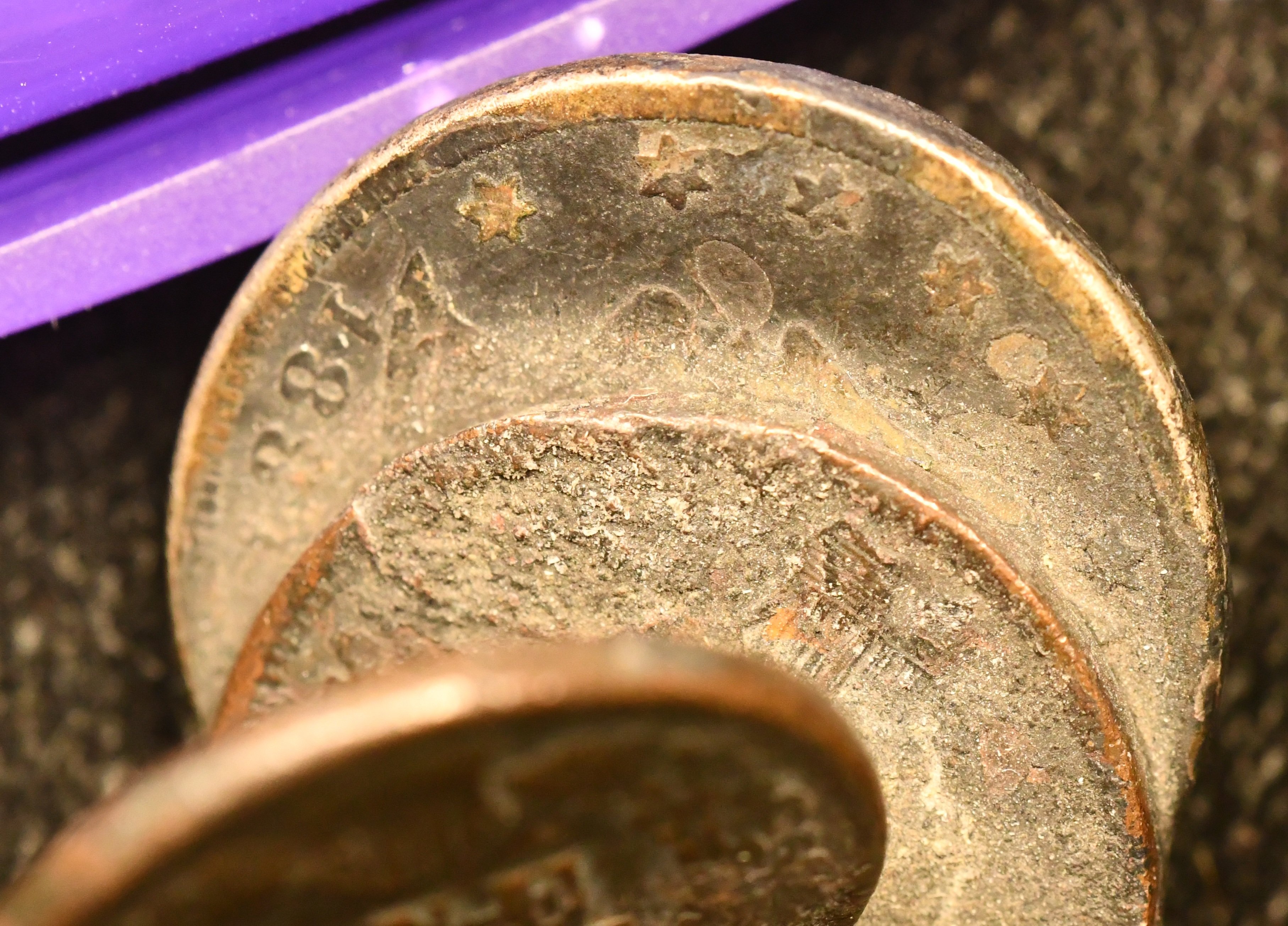
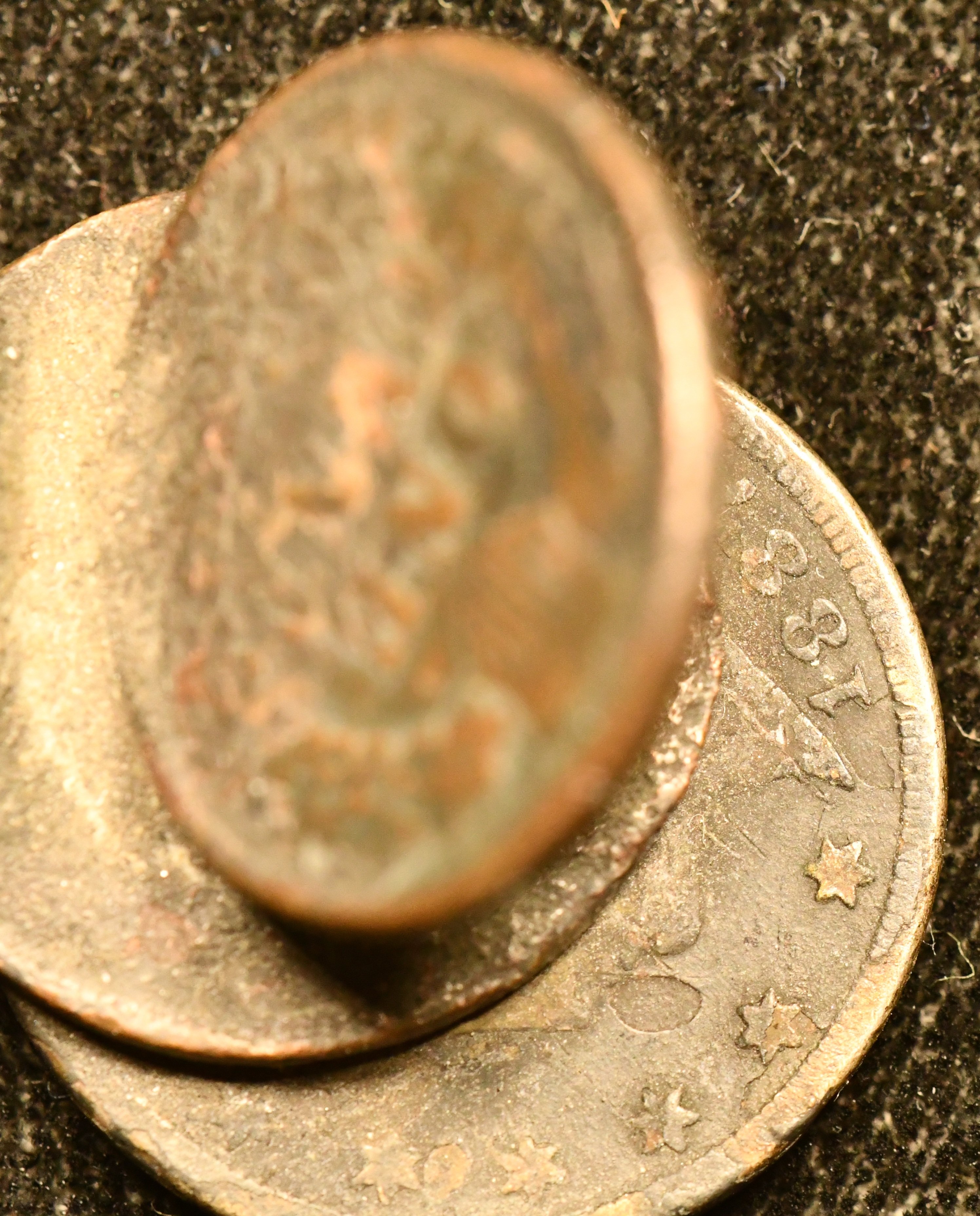
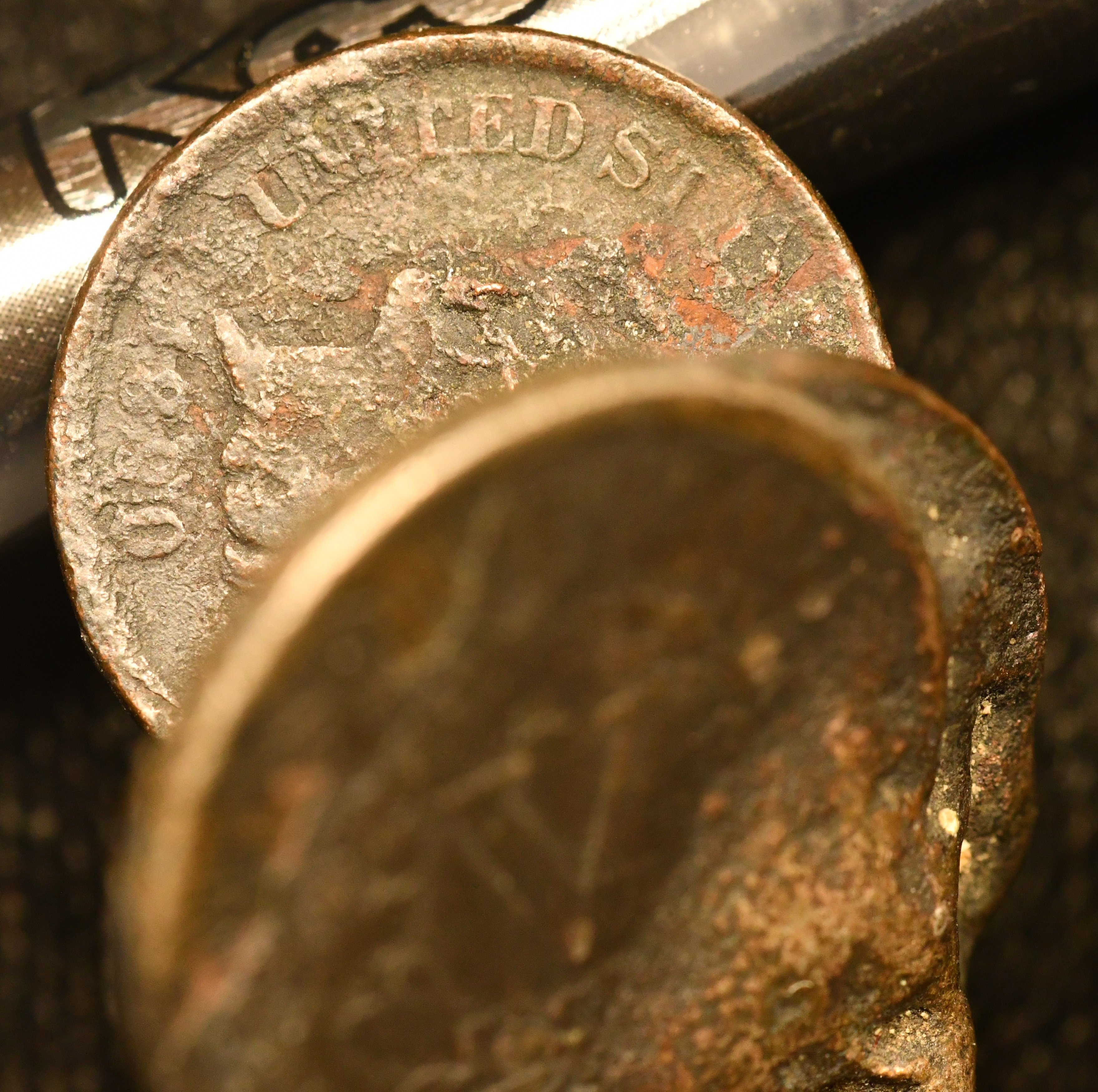
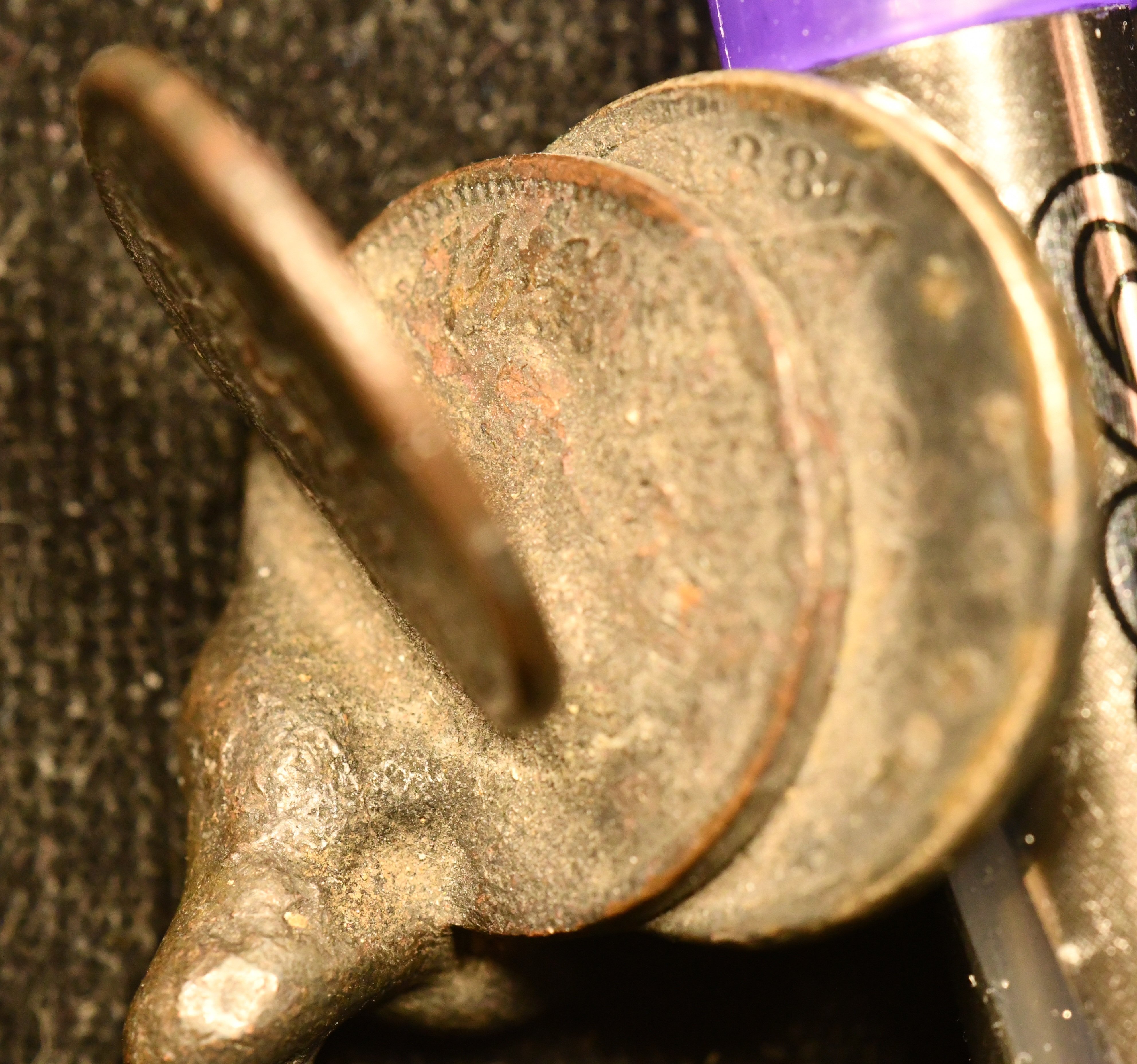
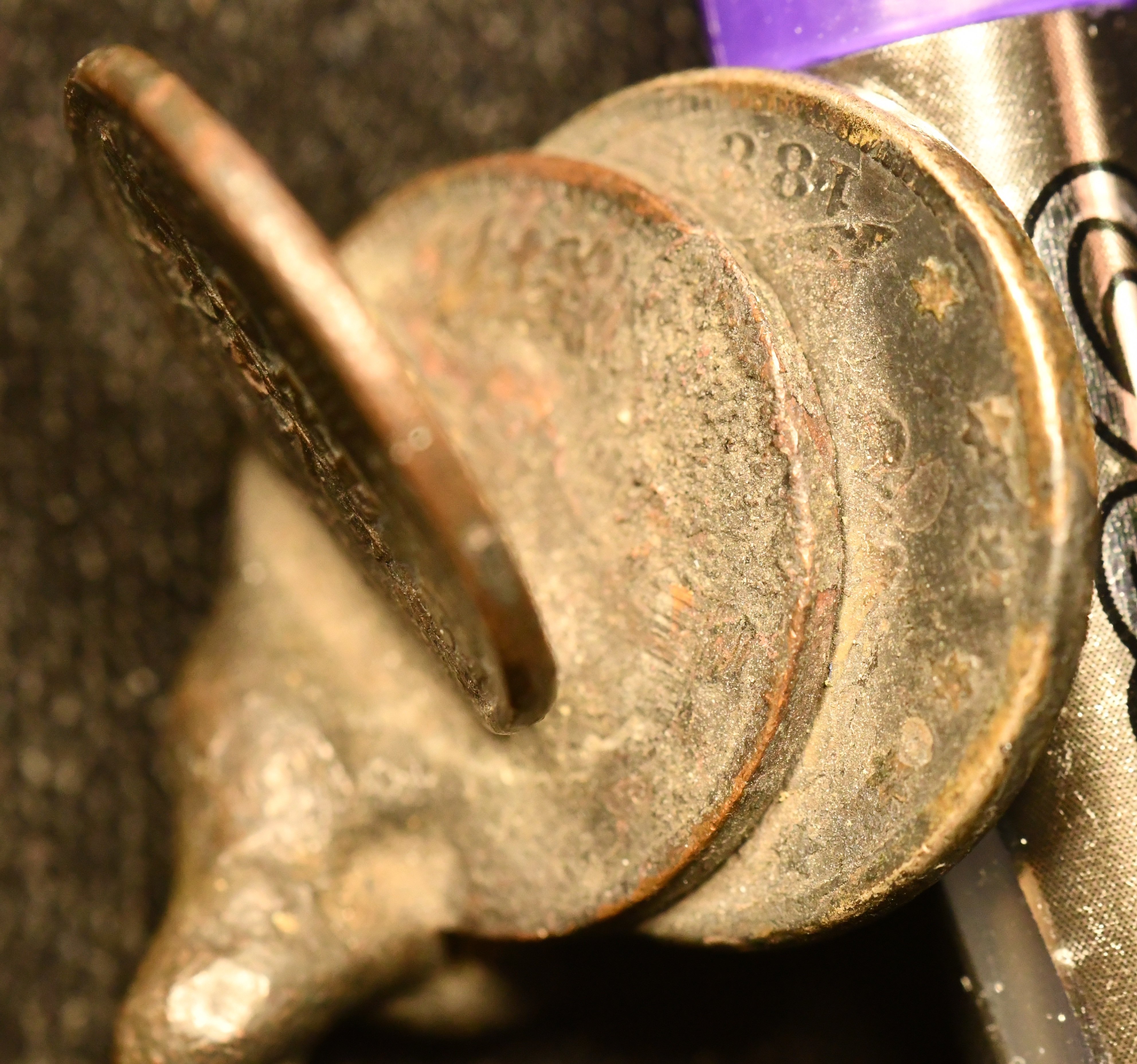
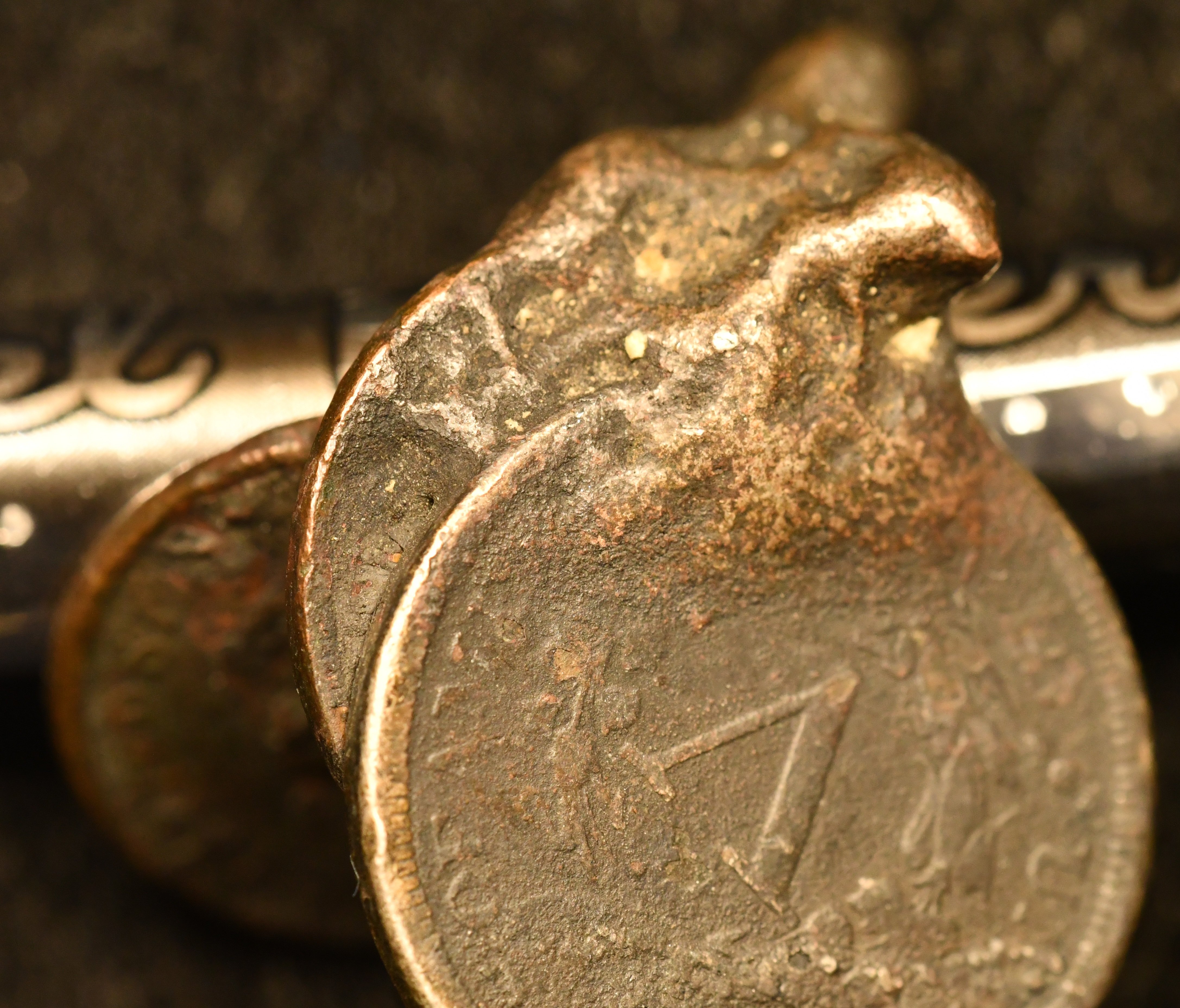
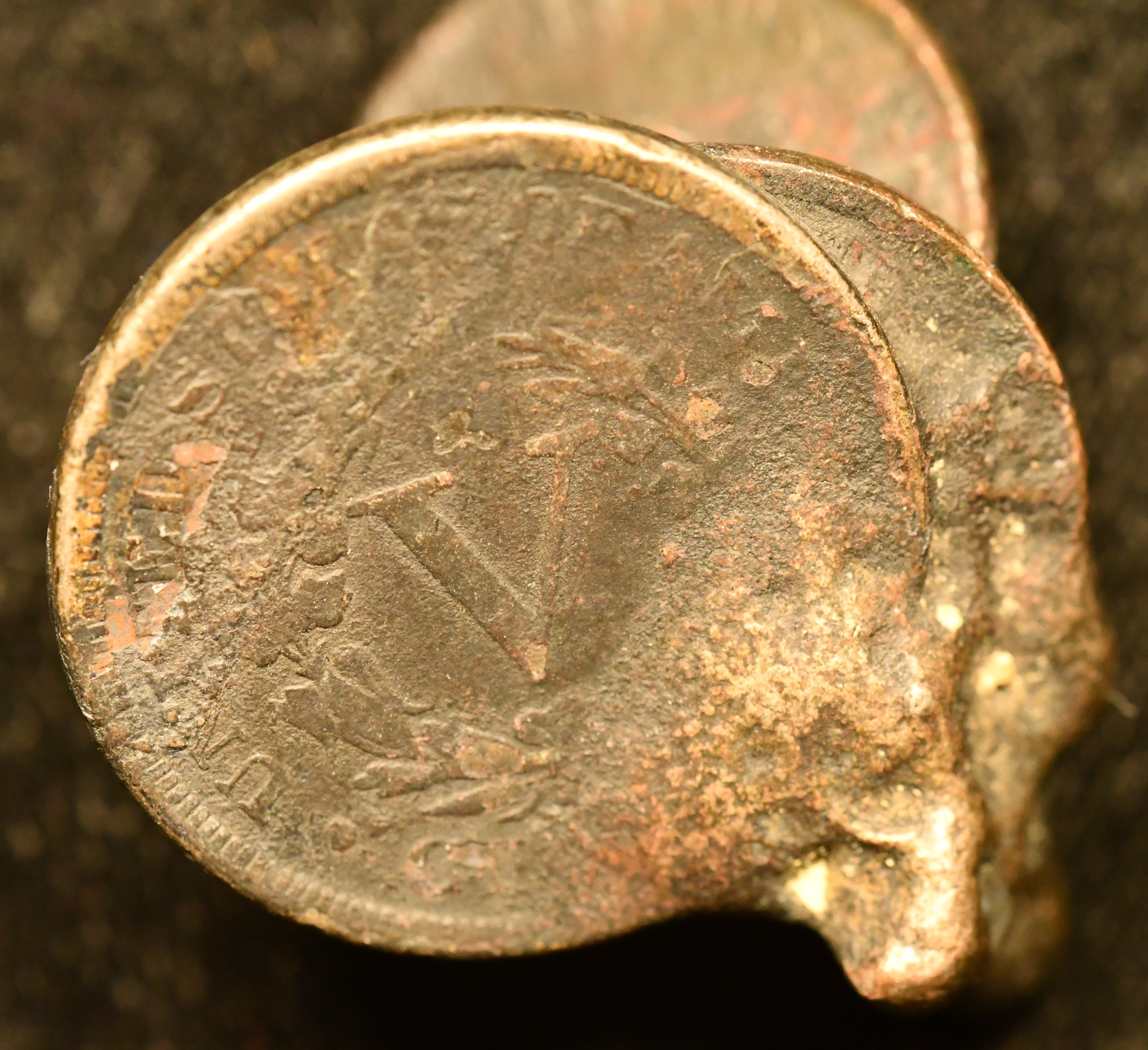
A Barber Quartet is made up of Nickels, Dimes, Quarters, and Halves.
I don't recall if I've ever posted this one here or not. Charles Barber designed this one. Bought from a forum member here on the BST.
@jedm I like it Jed, nice. What grade do you have on that one in your estimation? AU?
Here is a recently imaged half dollar that I just never got around to imaging:
1901-P Barber Half PCGS AU58
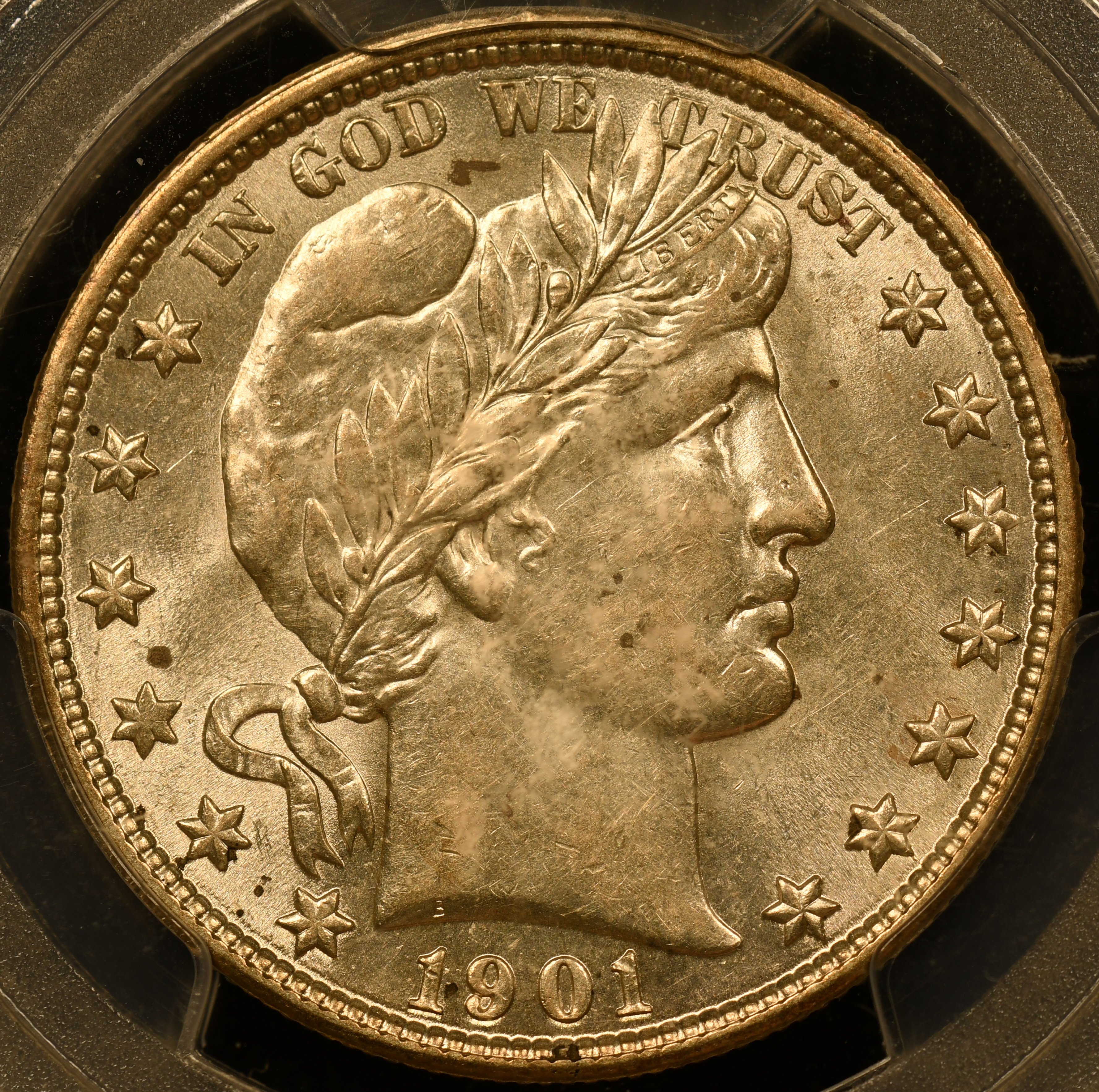
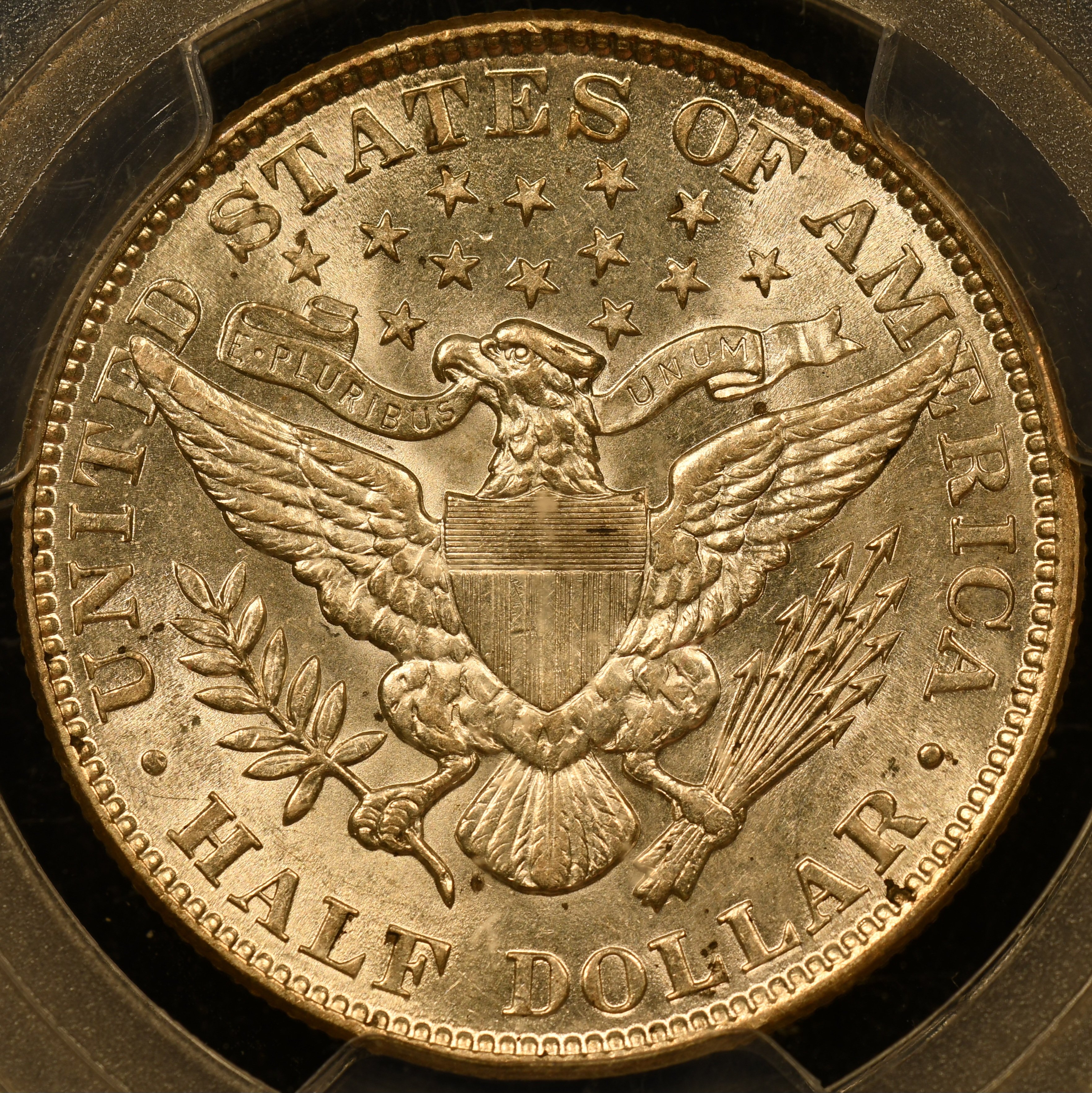
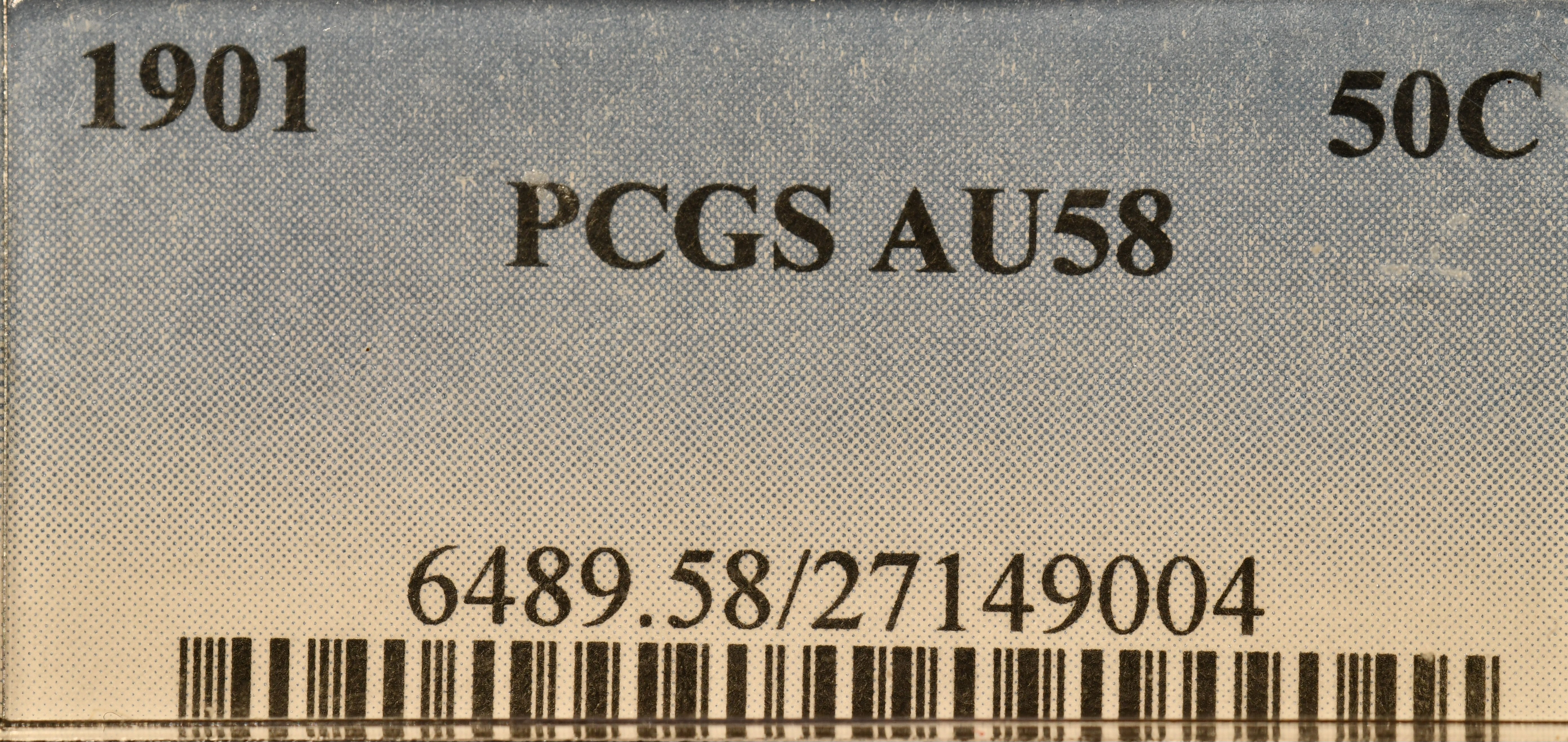
I think I obtained it earlier this year. I'll have to dig into my records.
Tim
A Barber Quartet is made up of Nickels, Dimes, Quarters, and Halves.
@sedulous Tim I think AU is about right, but there's a bit of a rim ding @1:00 on the obverse.
Here is a recent newp that just arrived today from DKRC. It was such a nice coin, I felt I needed to try and acquire it... obviously successful.
1902-O Barber Quarter PCGS XF40 Older Holder
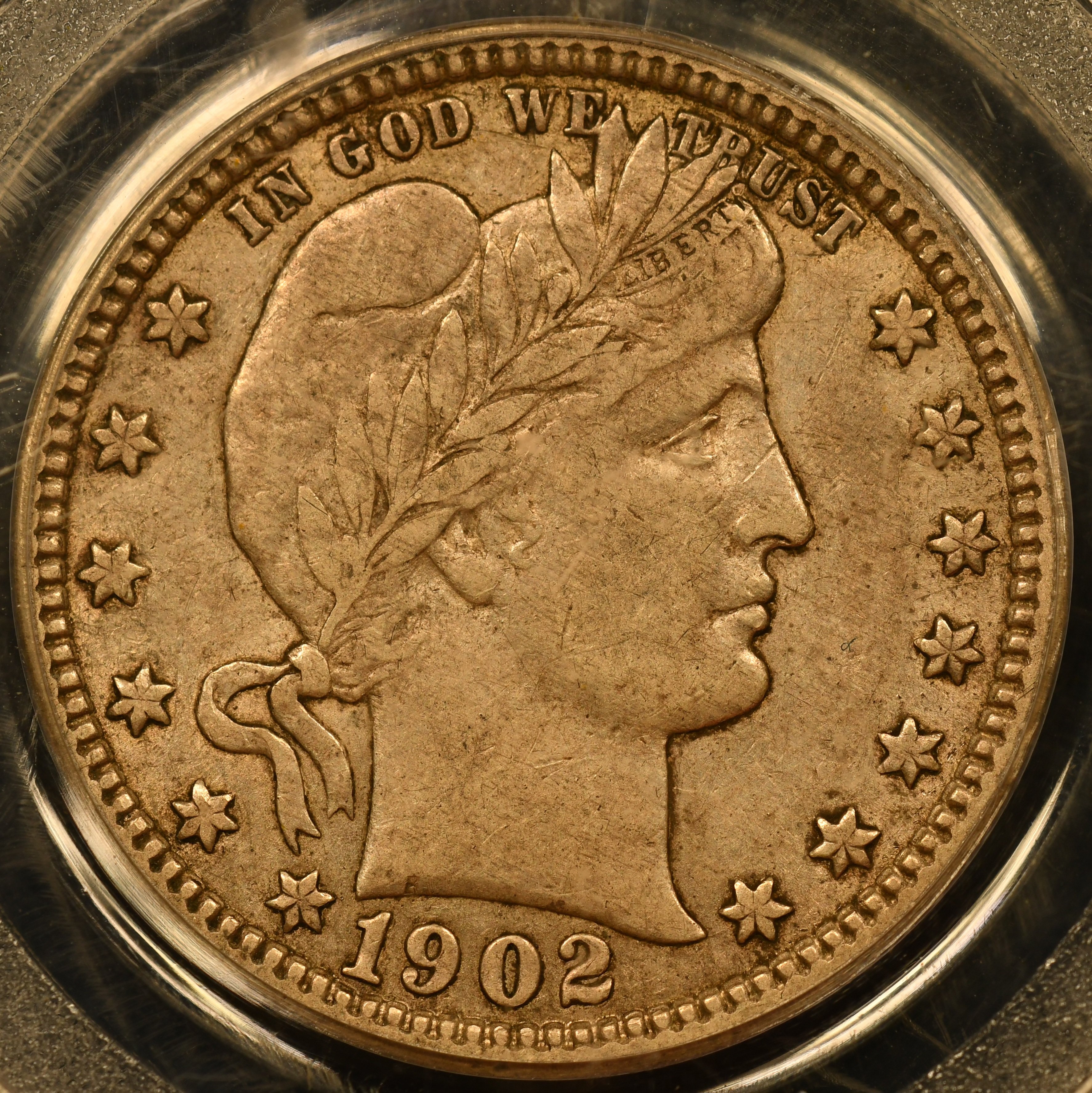
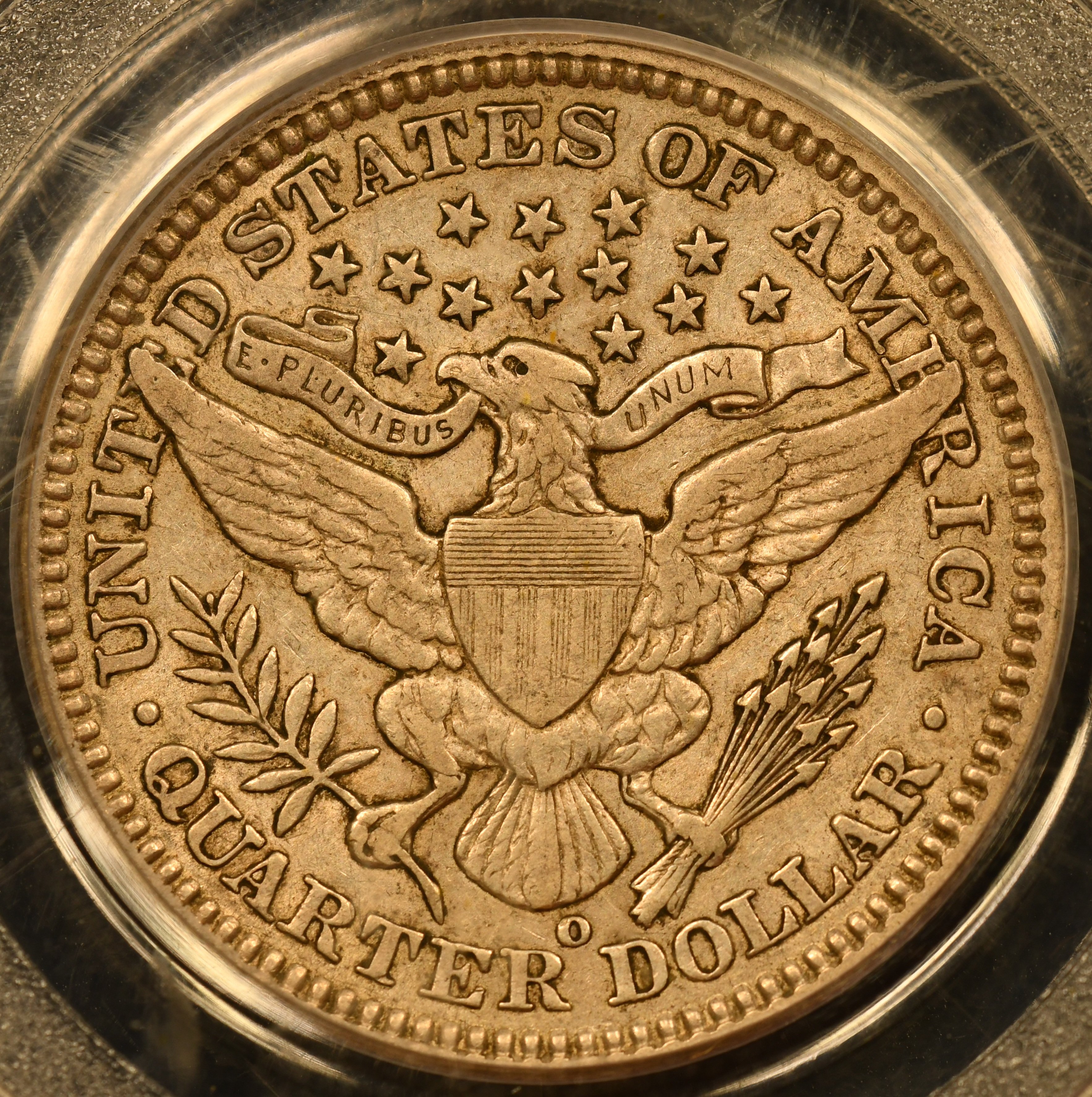
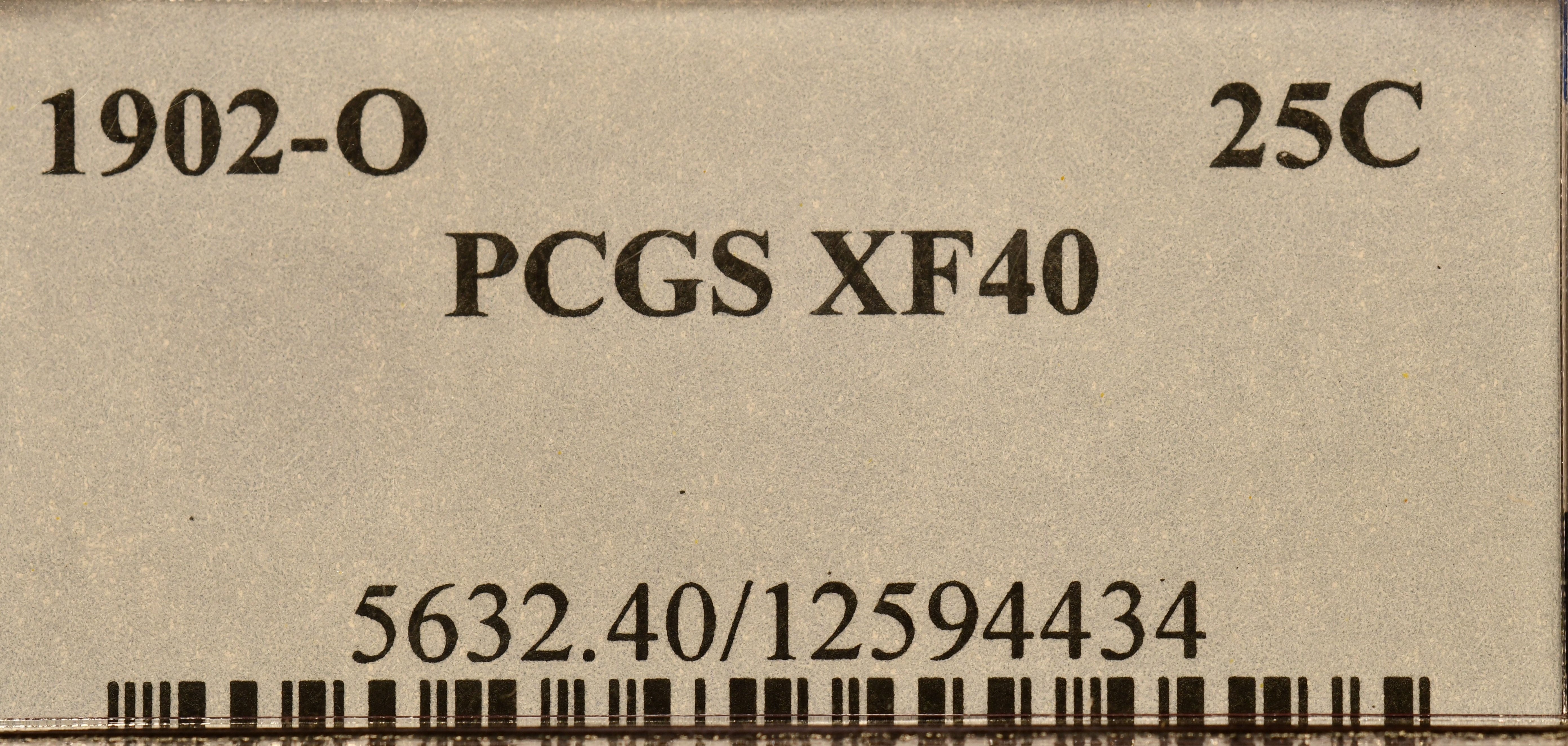
Seller pics
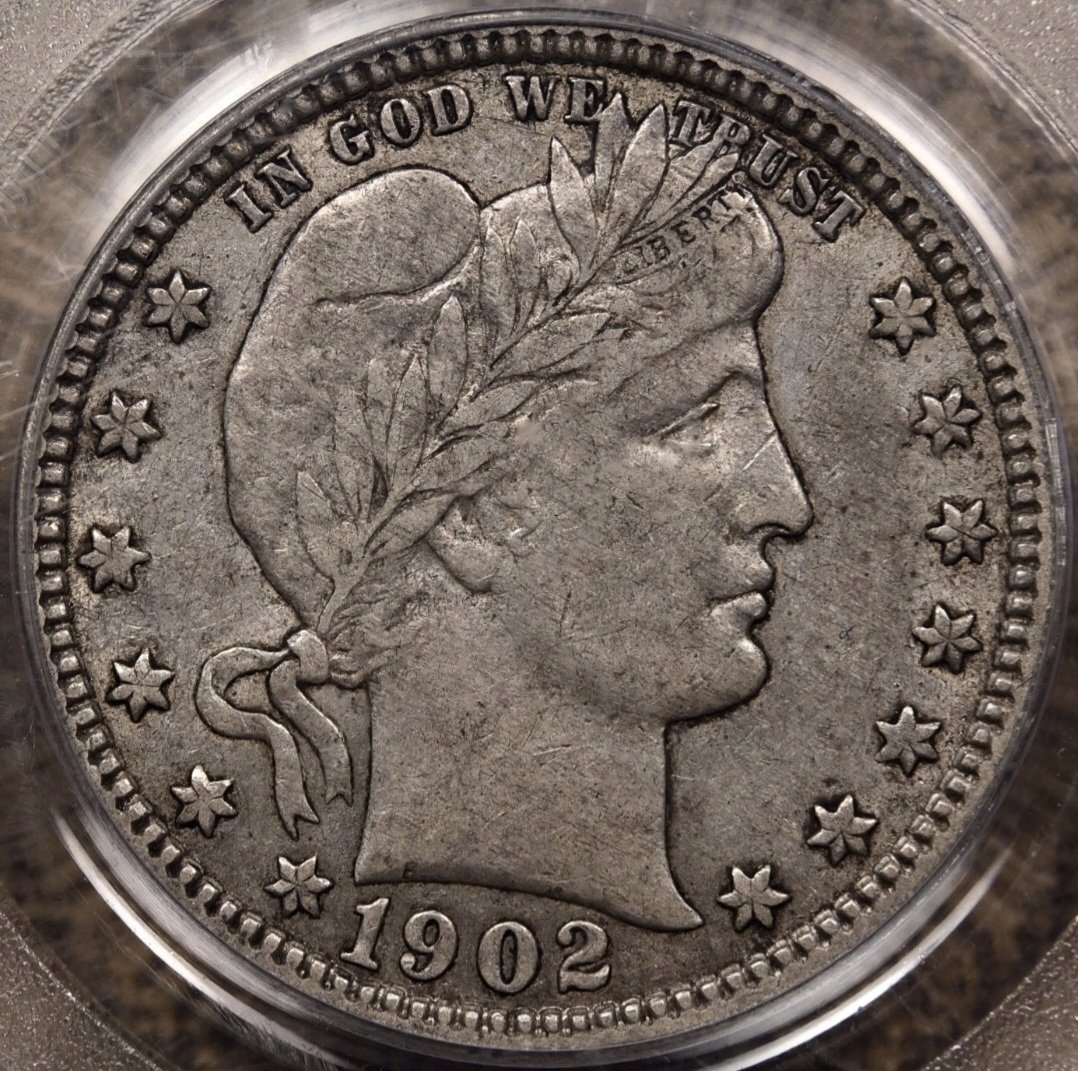
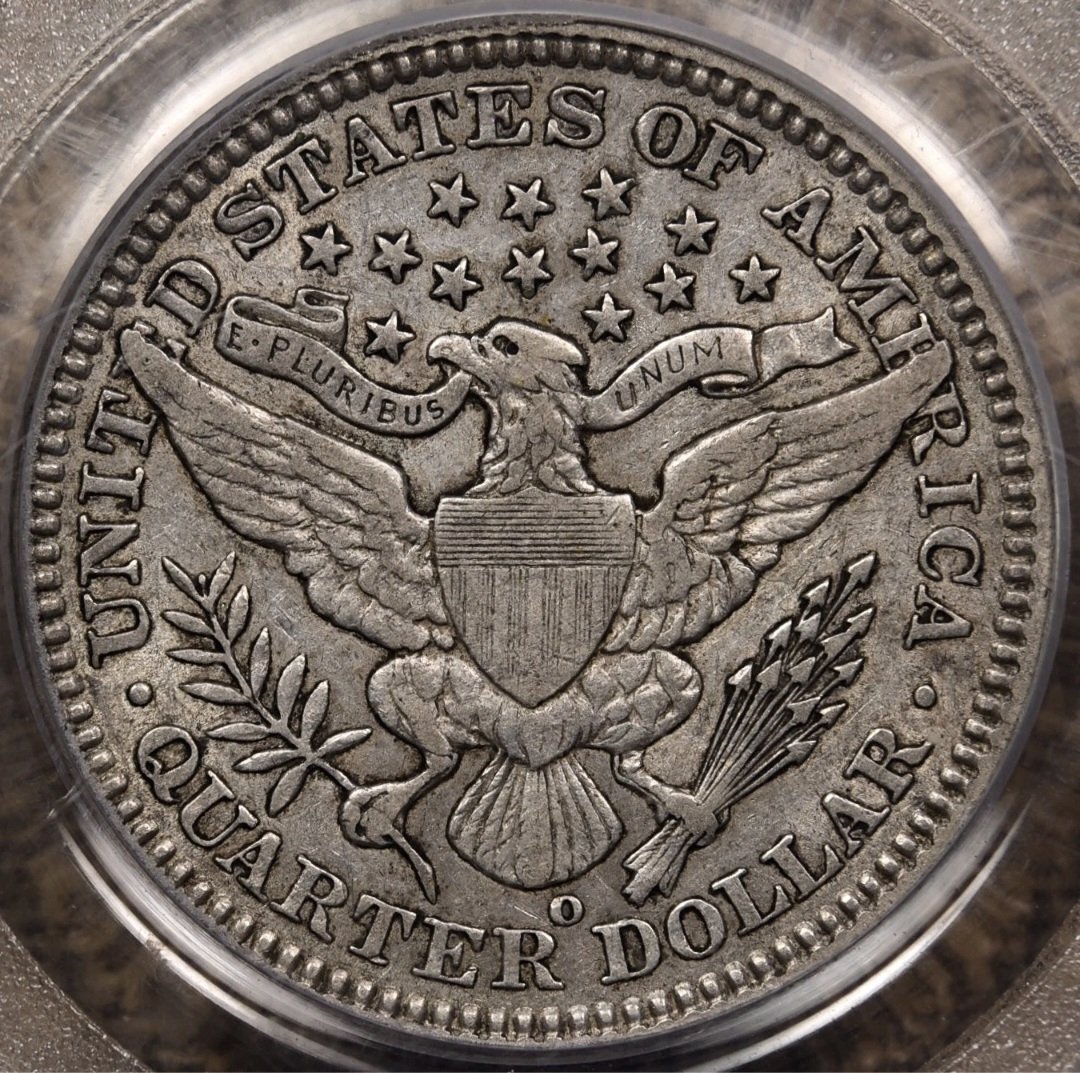
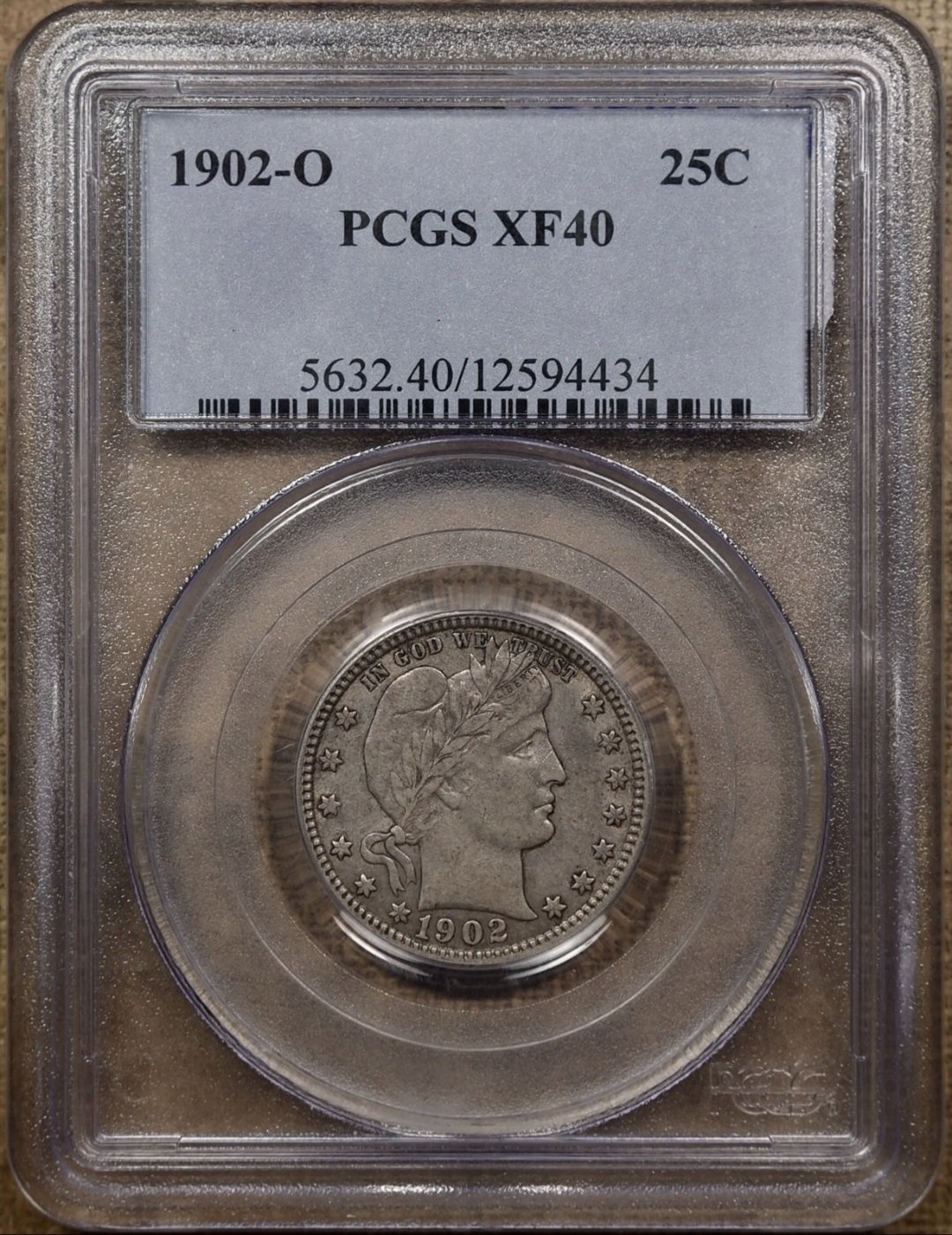
A Barber Quartet is made up of Nickels, Dimes, Quarters, and Halves.
Here is a newp from the wild found today in my local coin shop (LCS). Wildly toned and actually flashy on the obverse with some interesting reverse toning. When I first collected the quarters, I noticed how challenging the '07-D was in mid to high-end AU.
1907-D Barber Quarter AU Raw
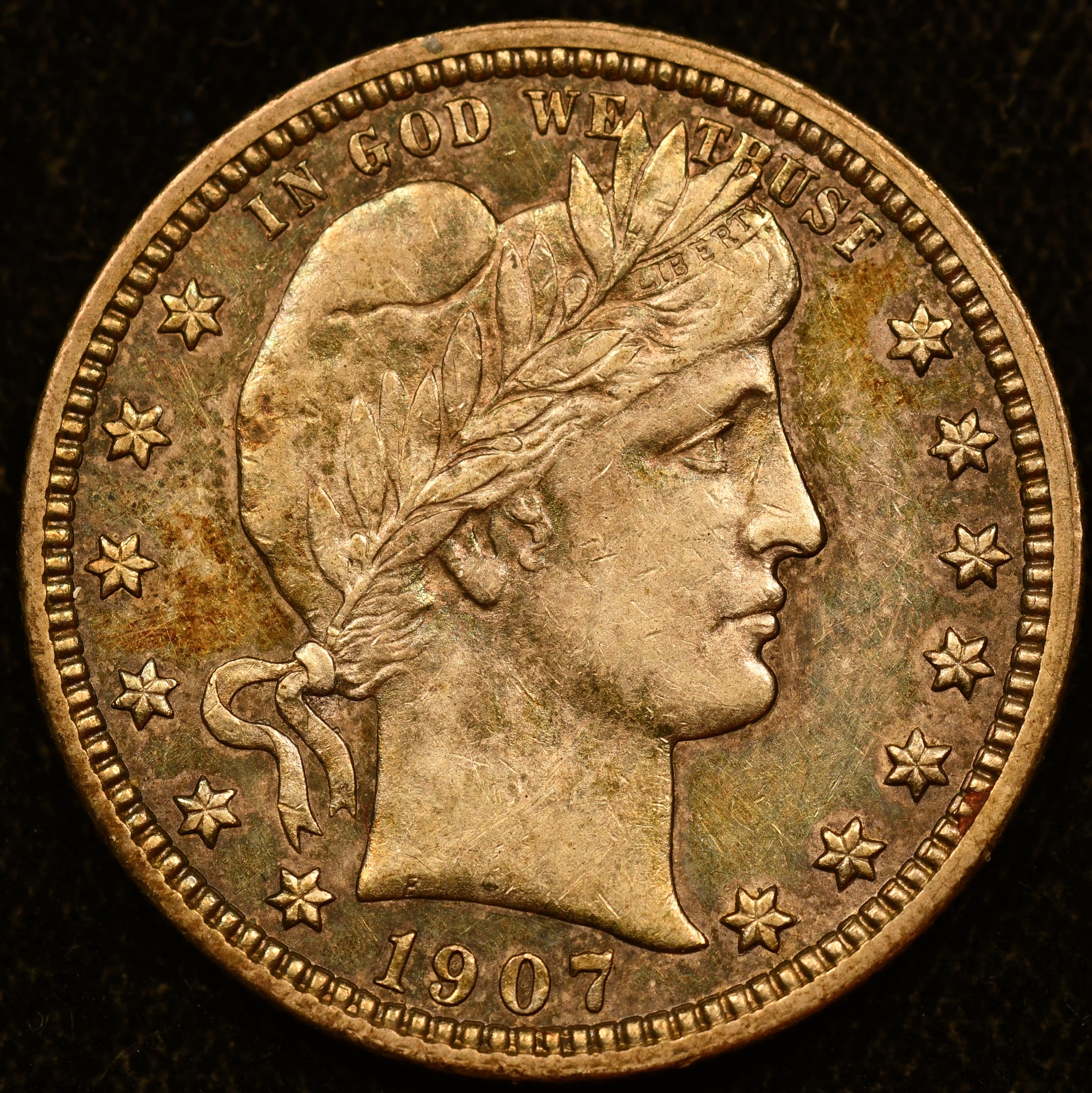
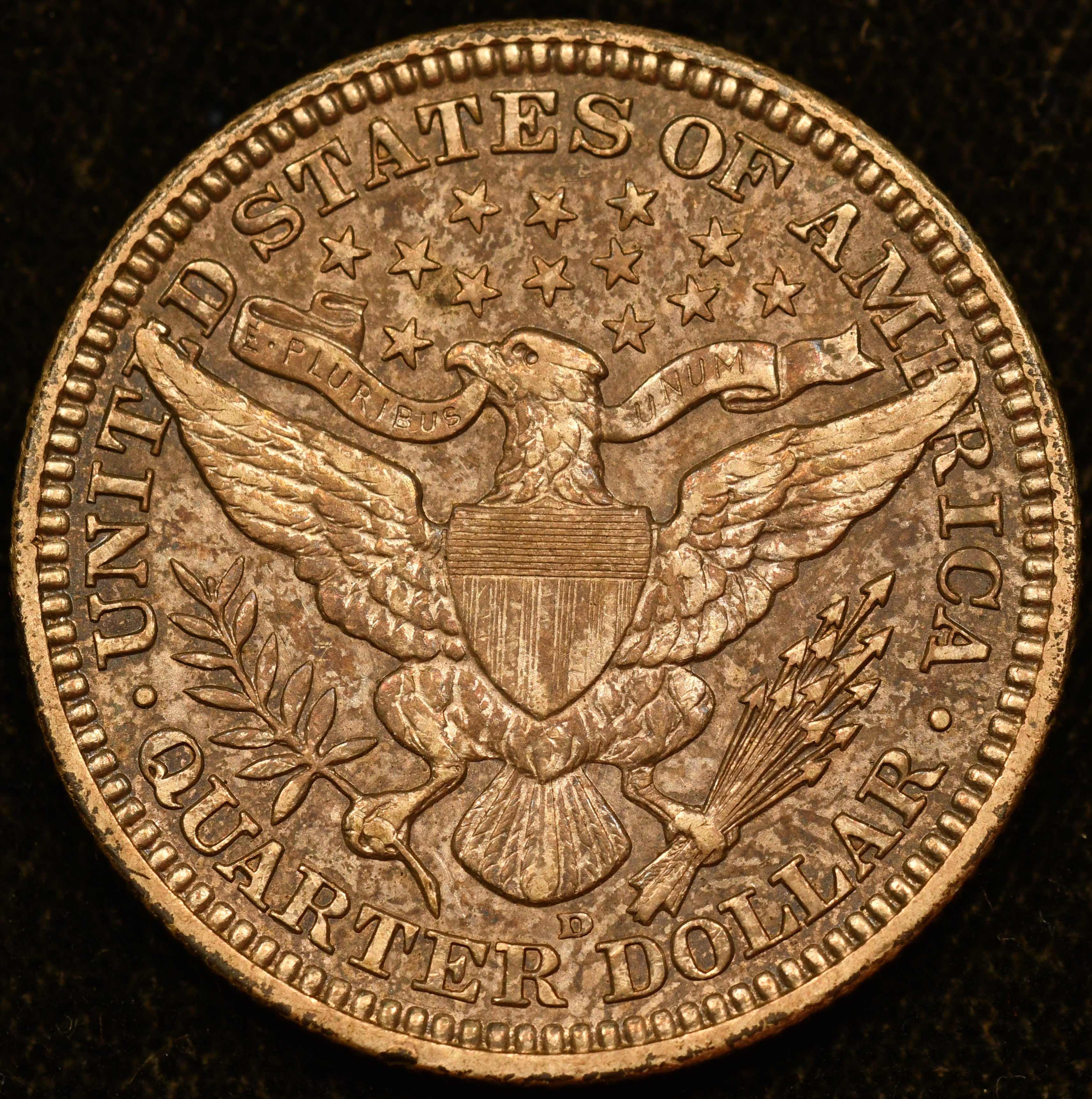
@jedm Thanks Jed, an AU Peso with or without a rimbump is cool none-the-less.
A Barber Quartet is made up of Nickels, Dimes, Quarters, and Halves.
Since this is a Charles Barber thread, I will add something he designed here. A recent pick-up, most of these have been melted:
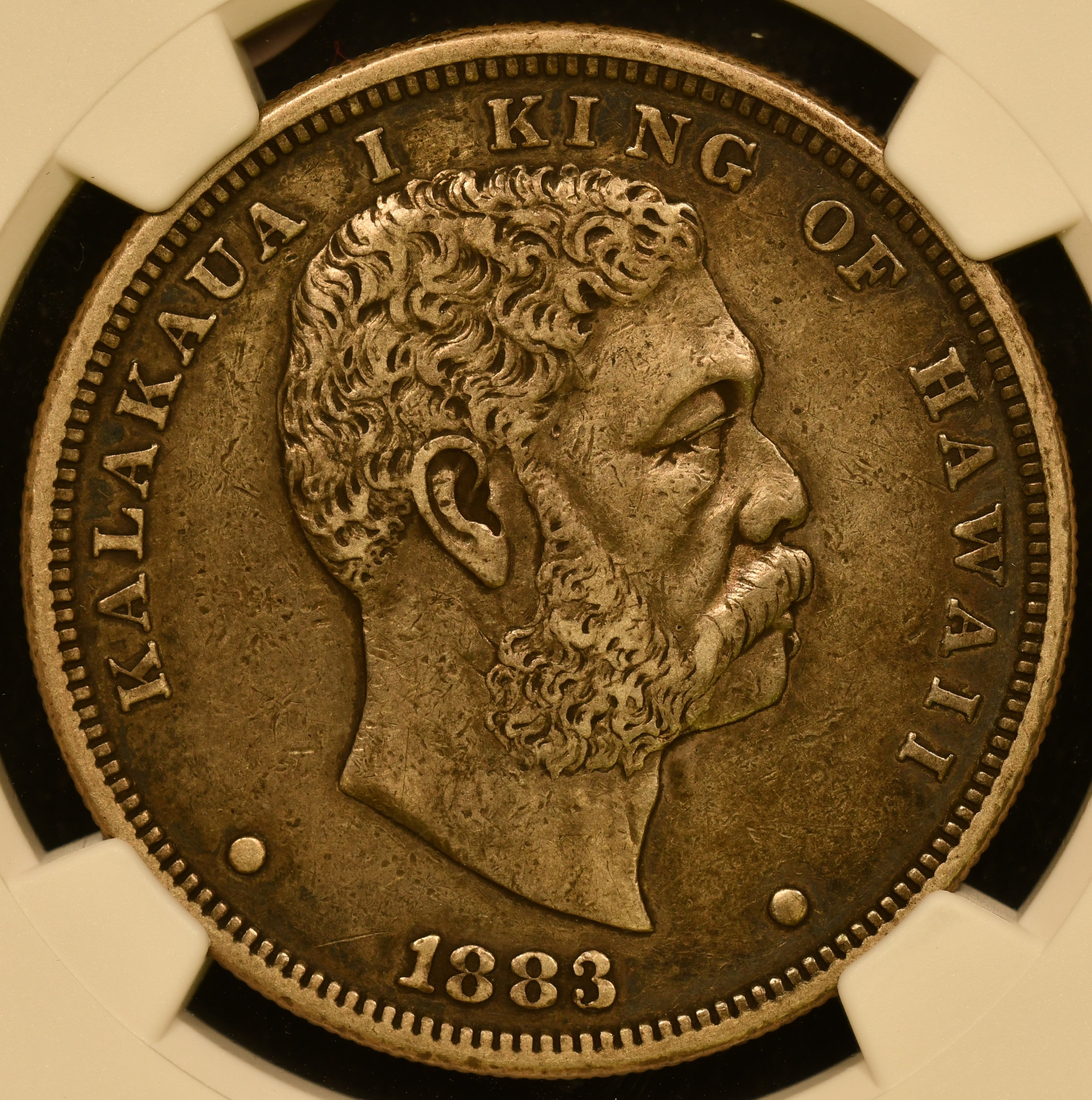
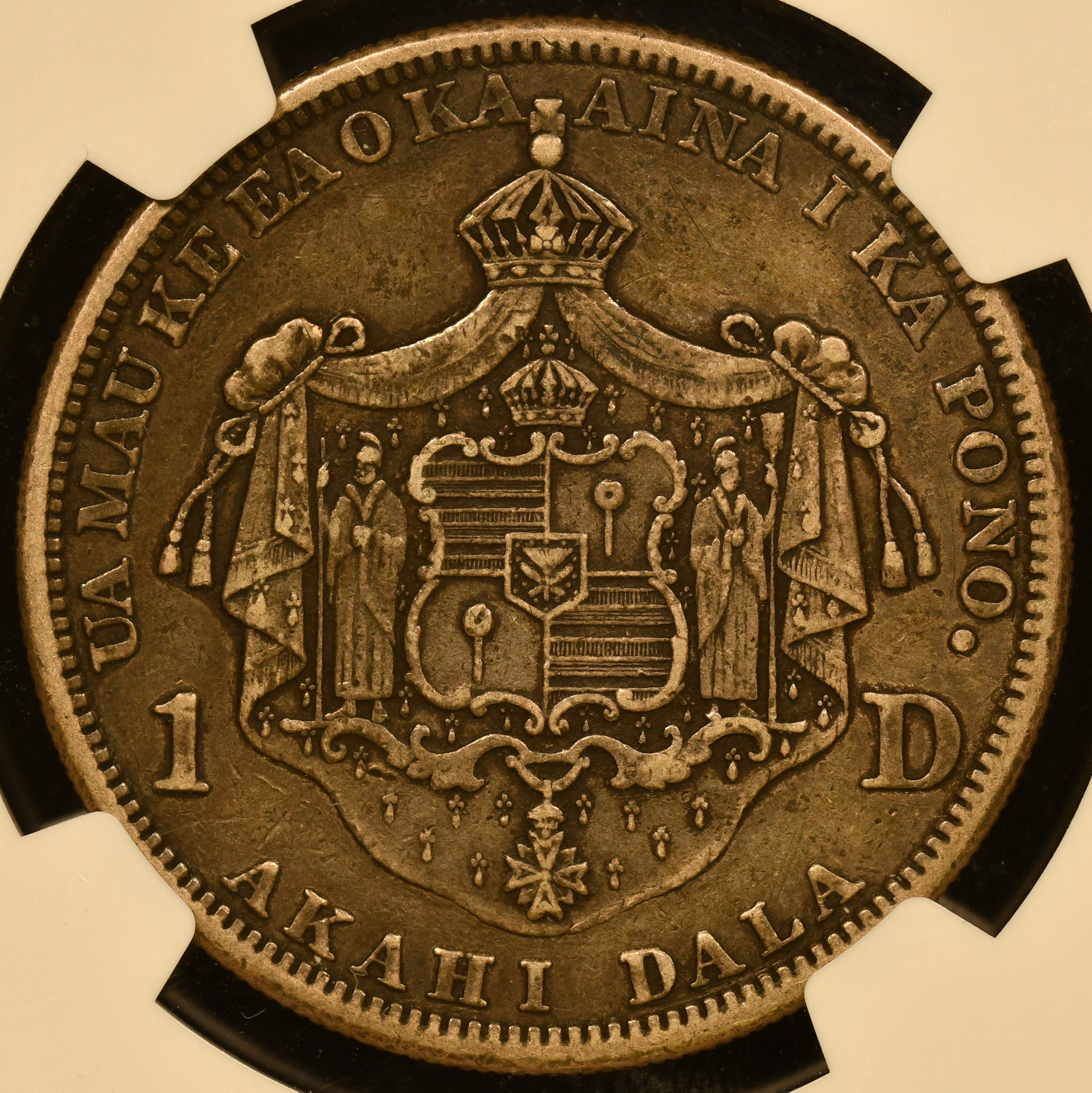
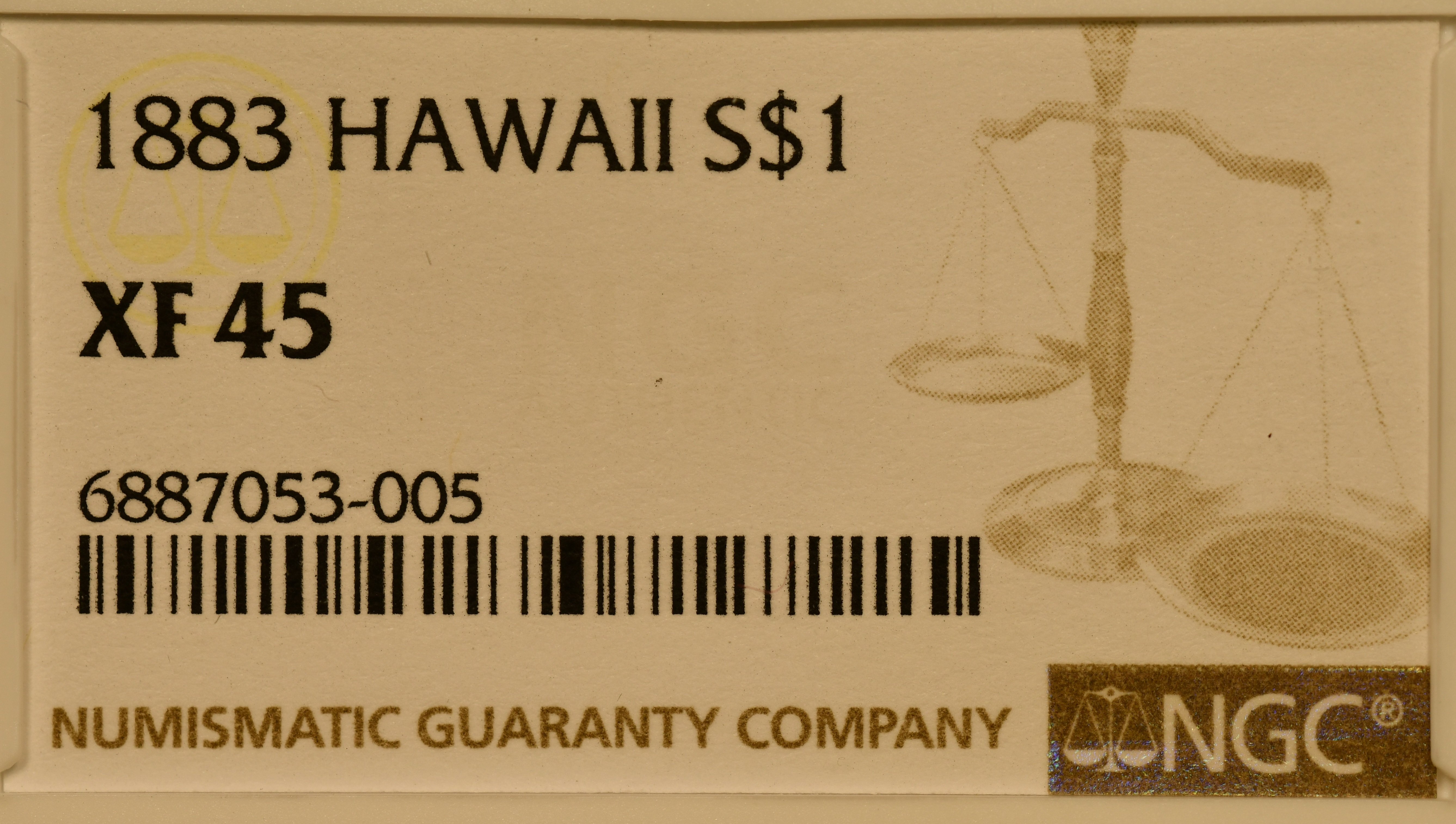
A Barber Quartet is made up of Nickels, Dimes, Quarters, and Halves.
I purchased my first coin in 1 1/2 years last week- a 1900 O Barber Quarter in a PCGS AU 58 holder with a Type I OBV/ Type II REV Hub combination. This upgraded the XF 45 Type !/ II in my 1900 Hub set.
Not the greatest strike, but it makes up for that with beautiful toning.
Although this doesn't seem to be the rarest hub combination for the 1900 O, it's very elusive in upper grades for some reason.
My 1900 BQ Hub Set now has all known combinations in PCGS MS or AU holders. I sure wish there was a way to get PCGS to recognize the Hub Varieties.
Great post,I had to look at my 1900-O PCGS 45 and take a few photo's and mine looks like type I Obv. and II reverse!!!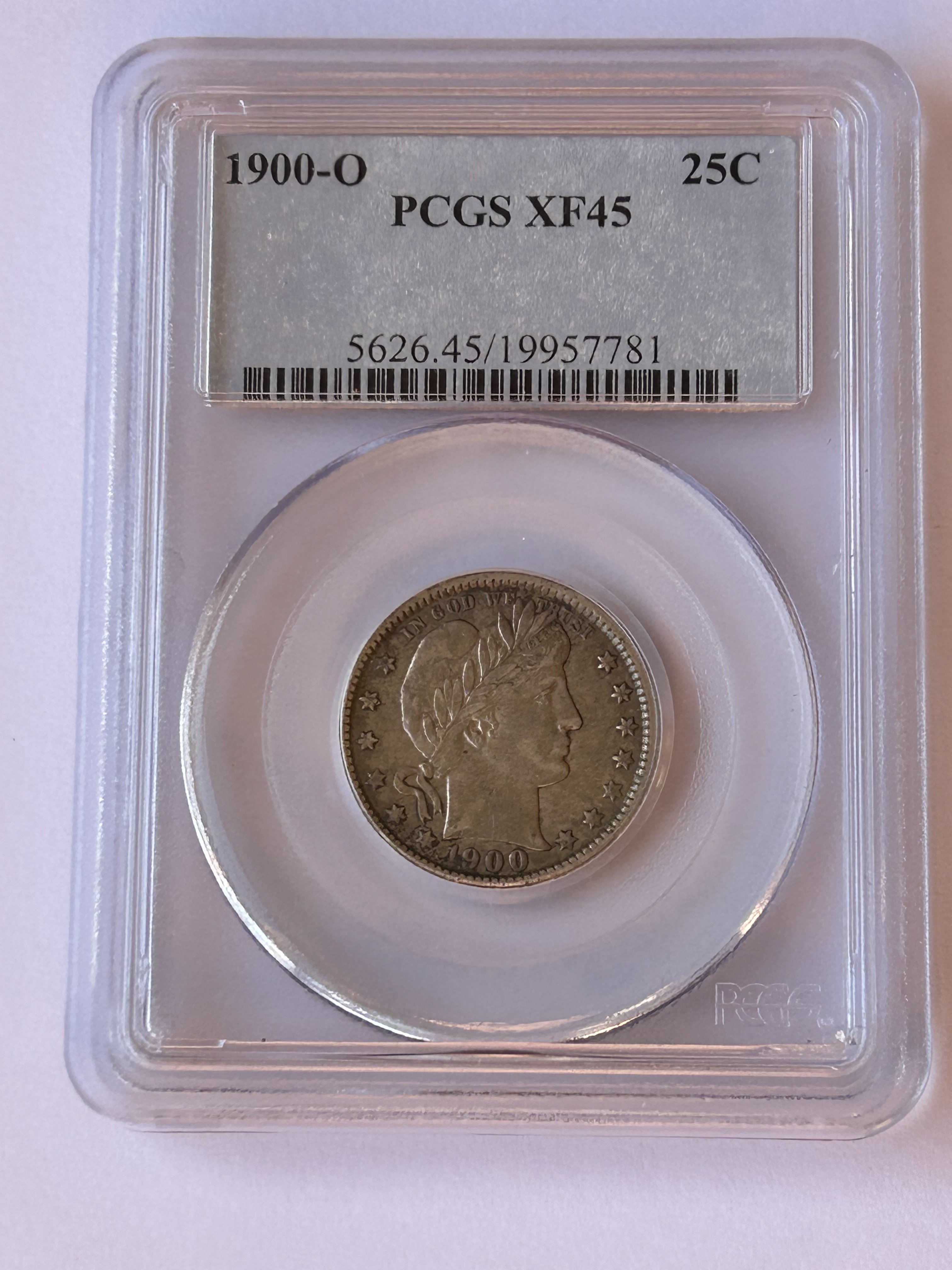
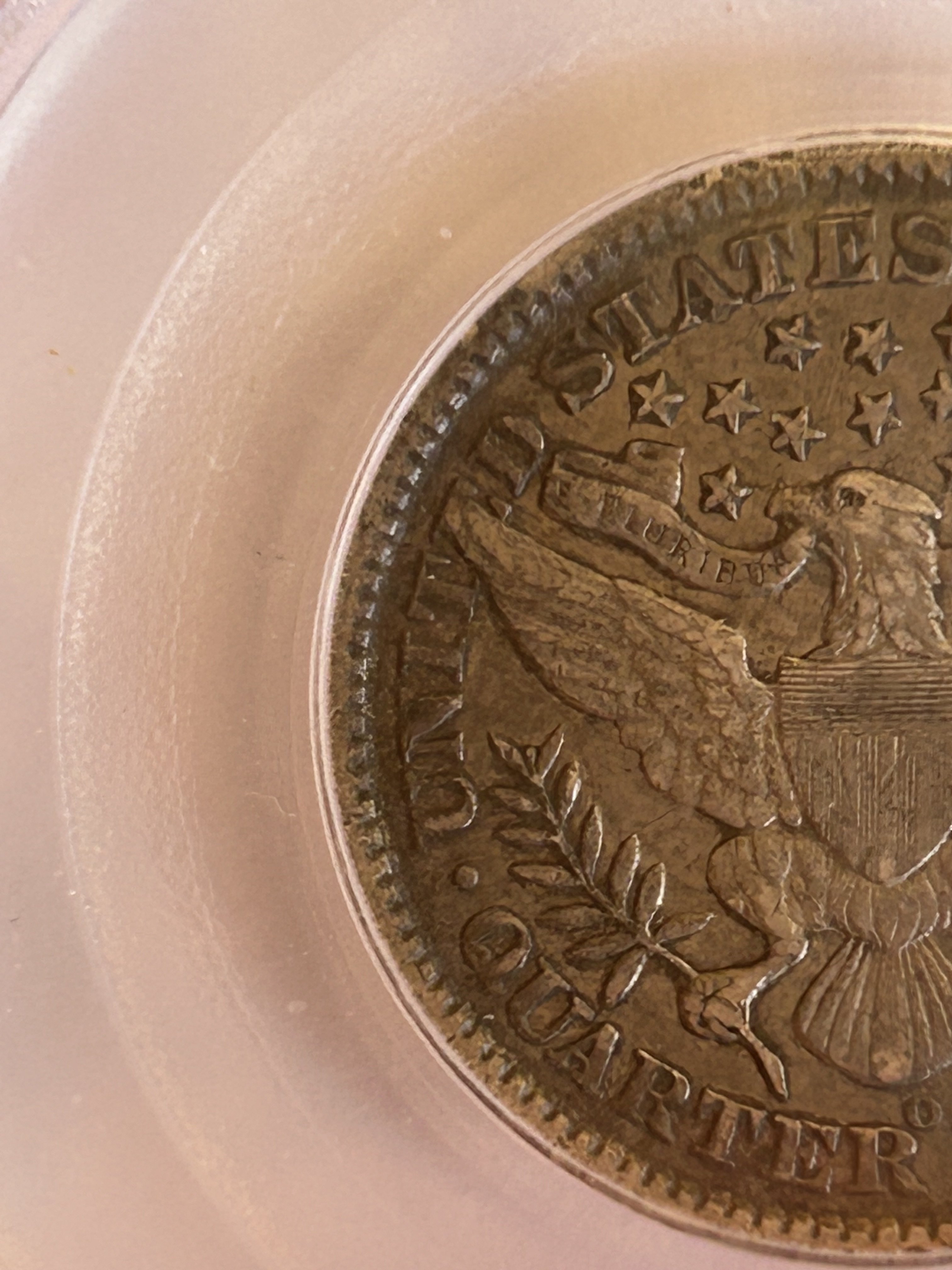
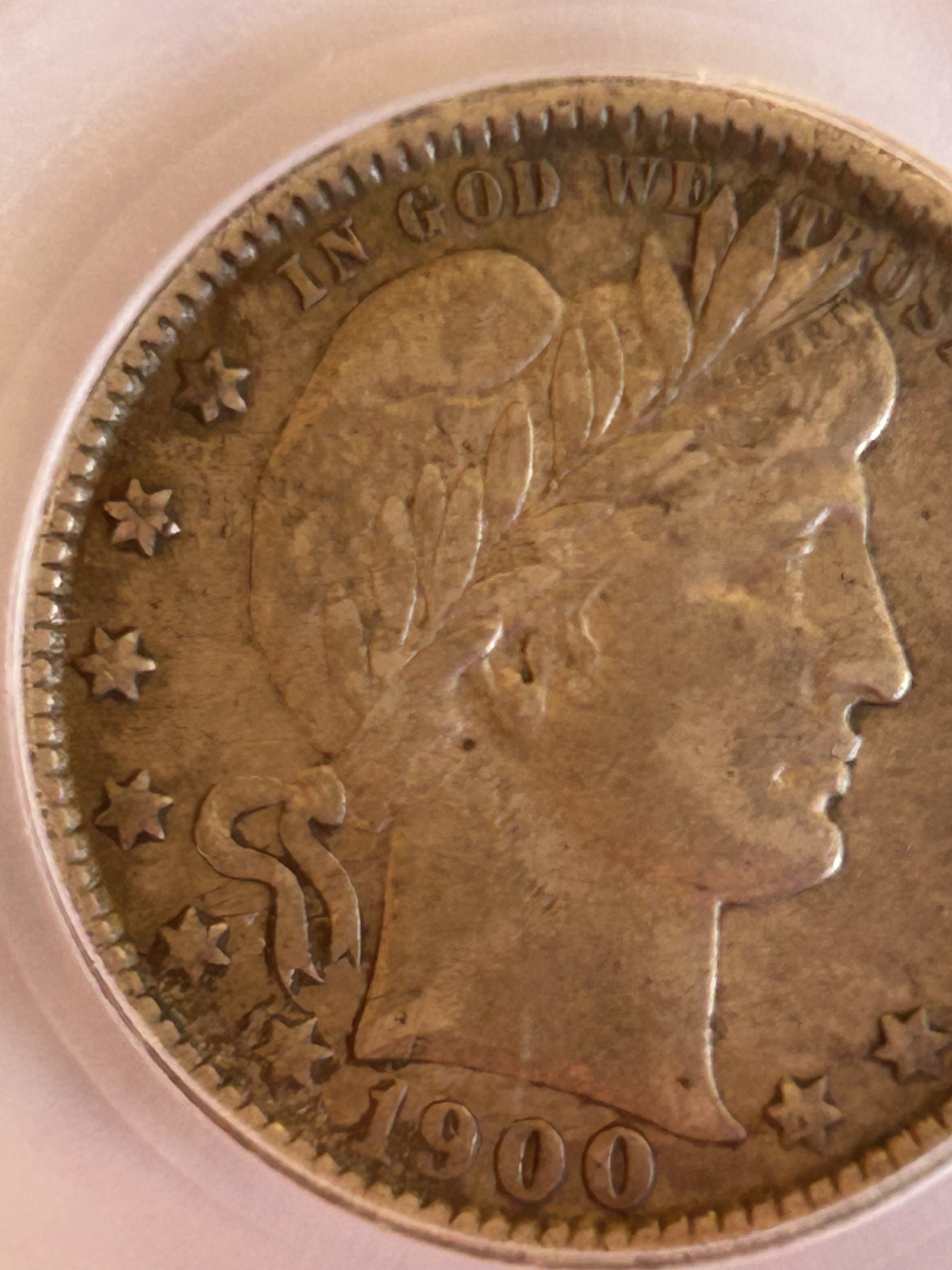
That is indeed a Type I/ II as well! Do you have any of the other combinations?
Here’s my 1900 O XF 45 I/II now in the back seat;
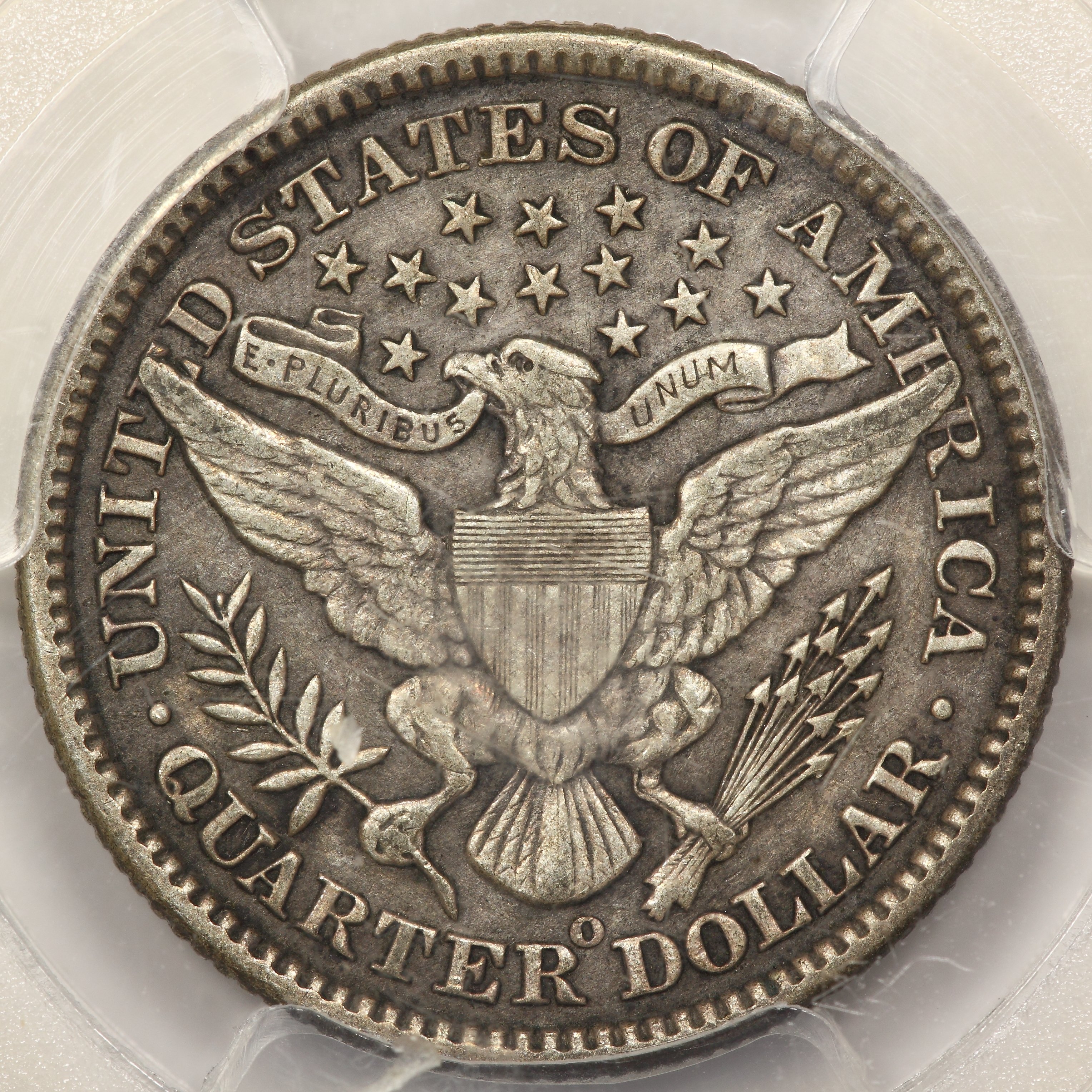
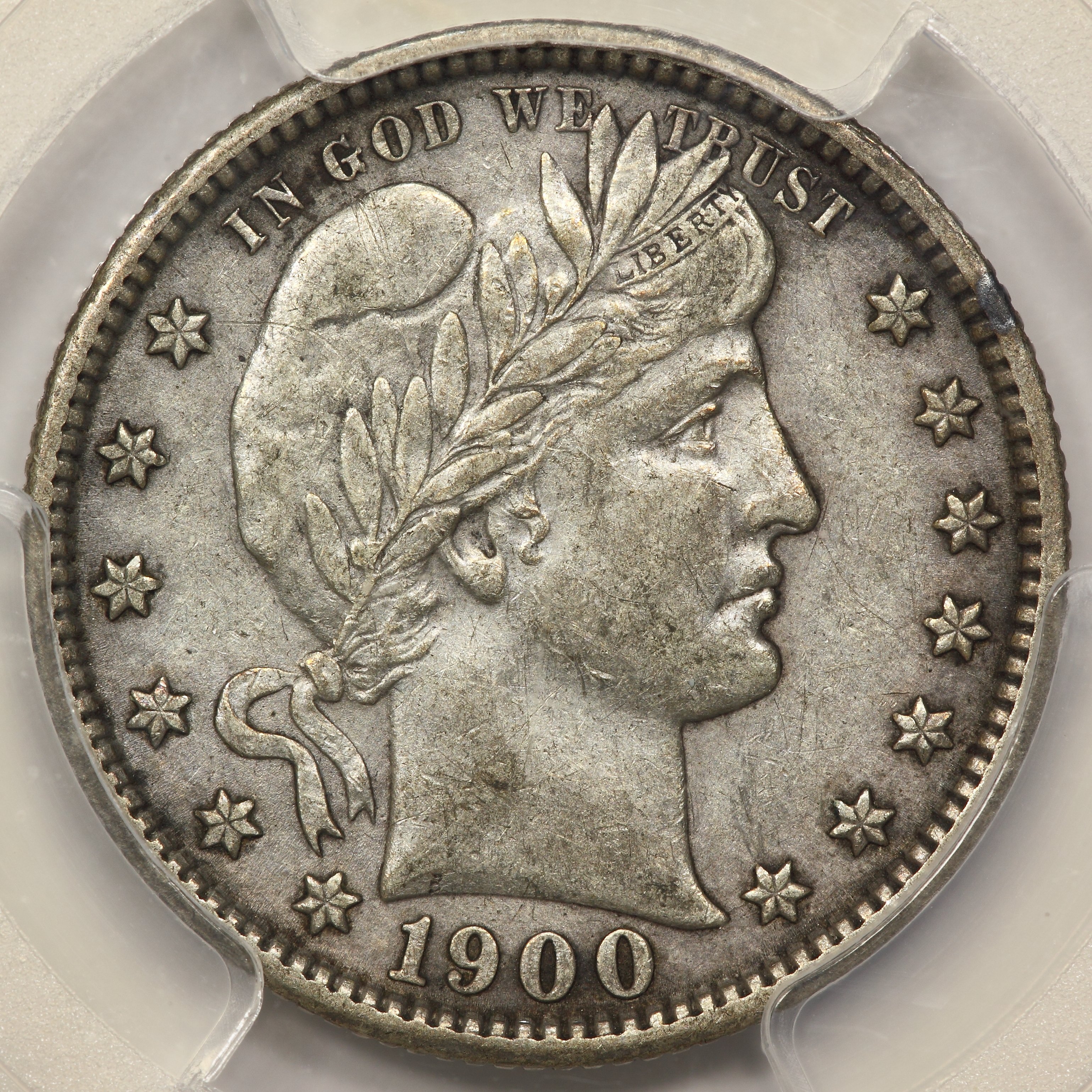
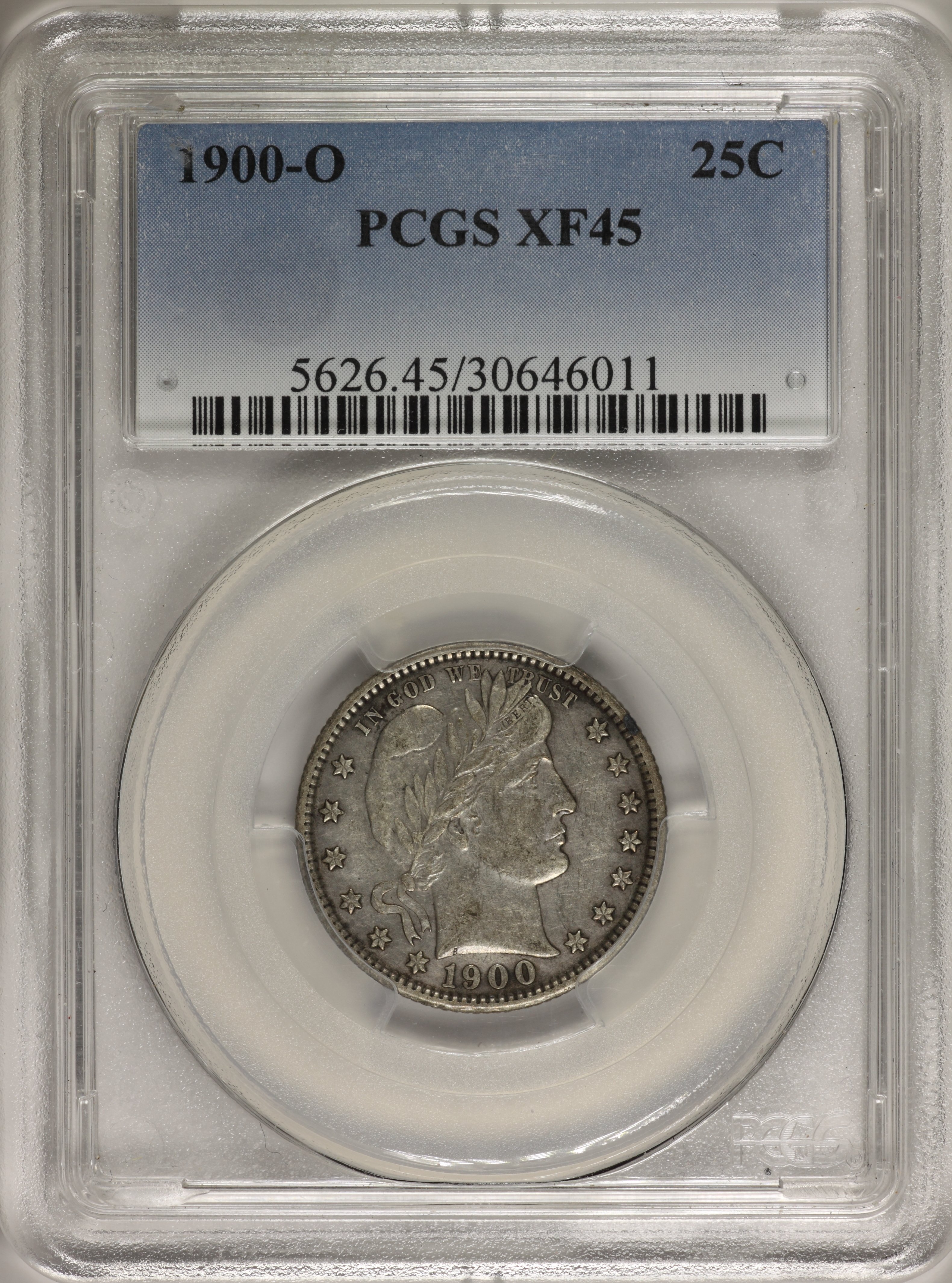
No I don't.I looked at the BCCS data from 2013-14 and this variety was the #2 variety of the 14 listed.Where could I look for updated info?
This is in my Dansco...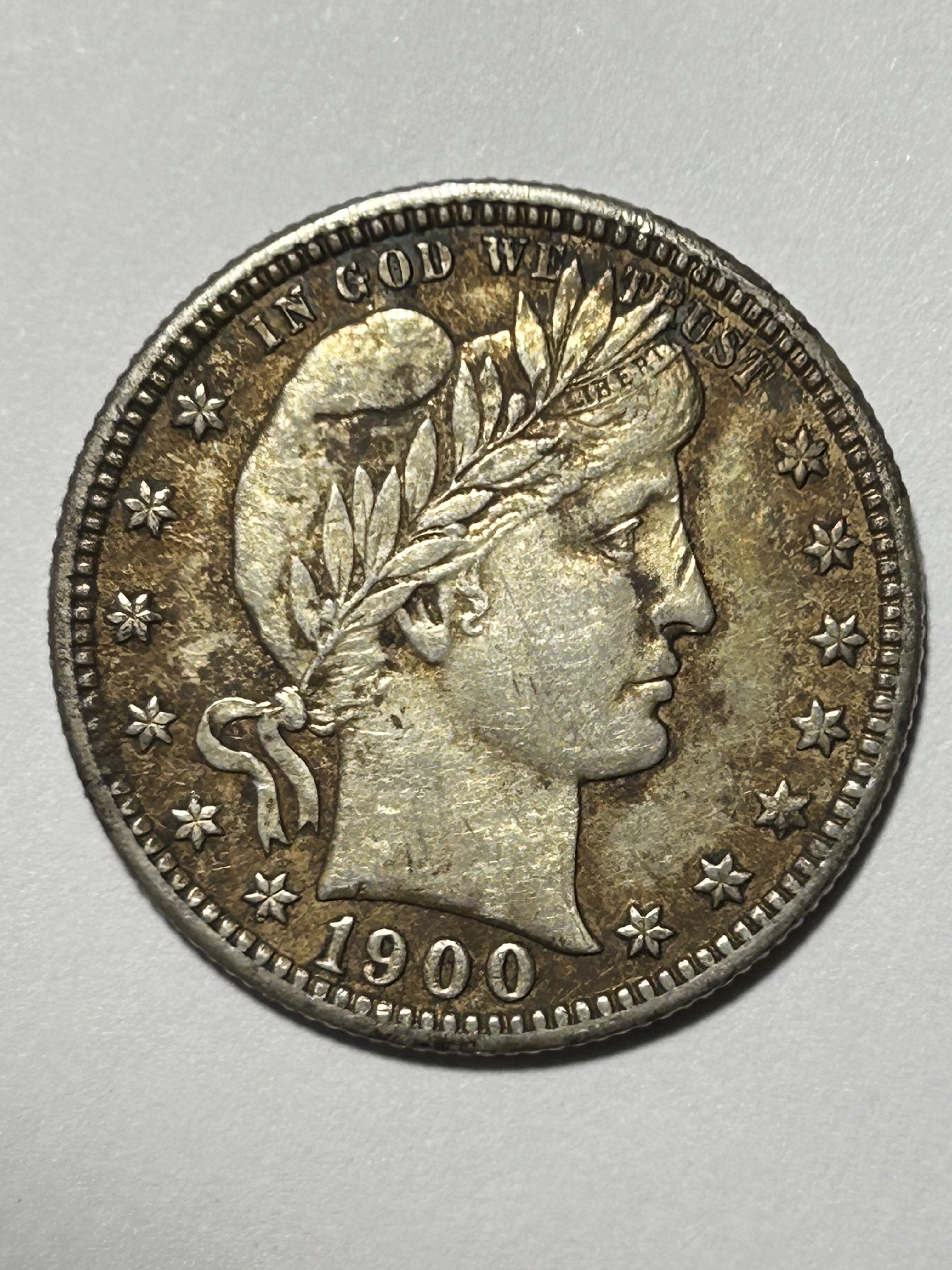
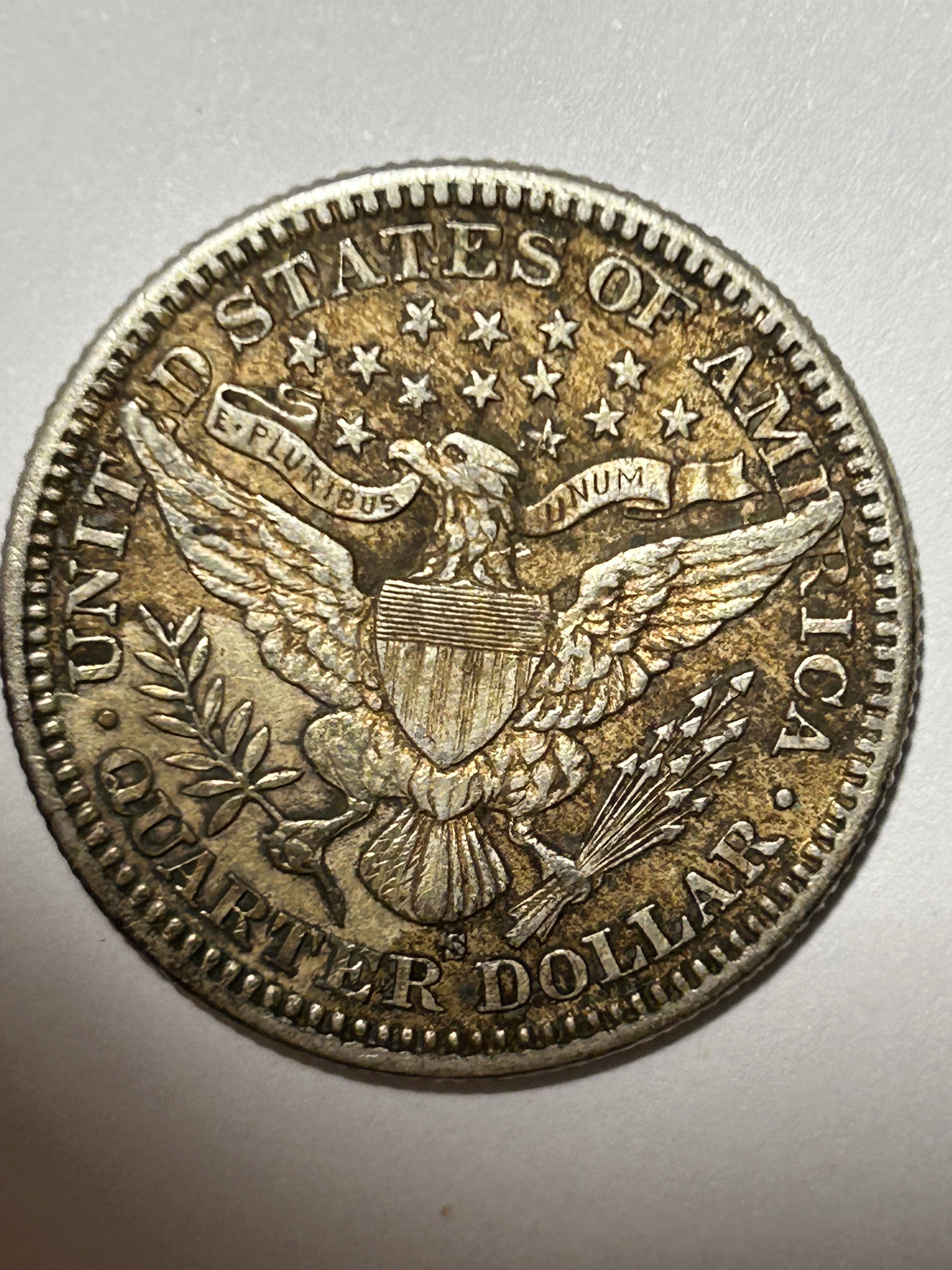
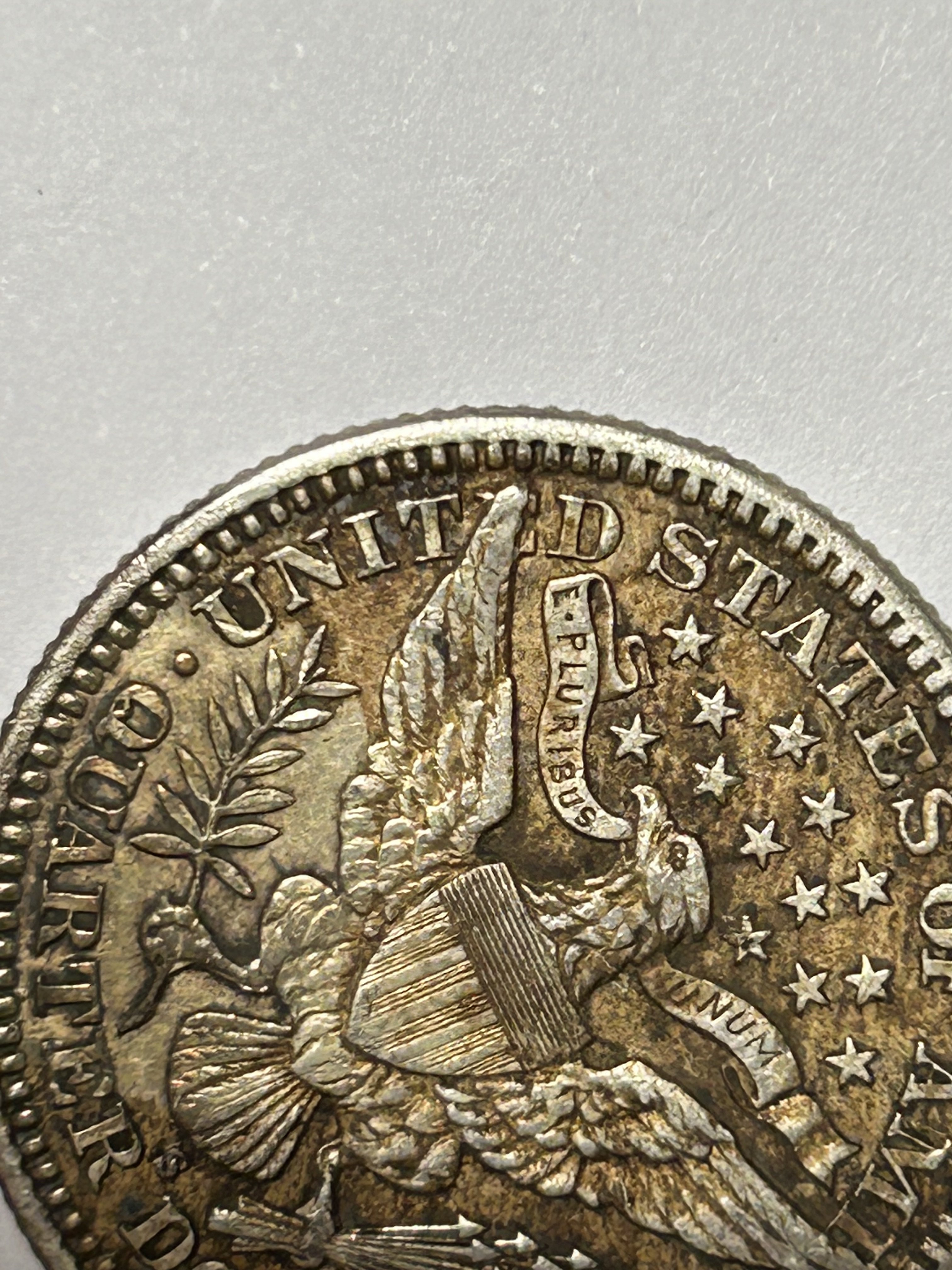 is a II/III which is #4 on the list.
is a II/III which is #4 on the list.
I don’t believe the BCCS Website has been updated to show there are 3 OBV hubs used in 1900. In 1900 there were 3 OBV and 2 OBV hubs used. Not all combinations were used at each mint. I can post additional information if there’s interest.
I'm waiting for this one to arrive:
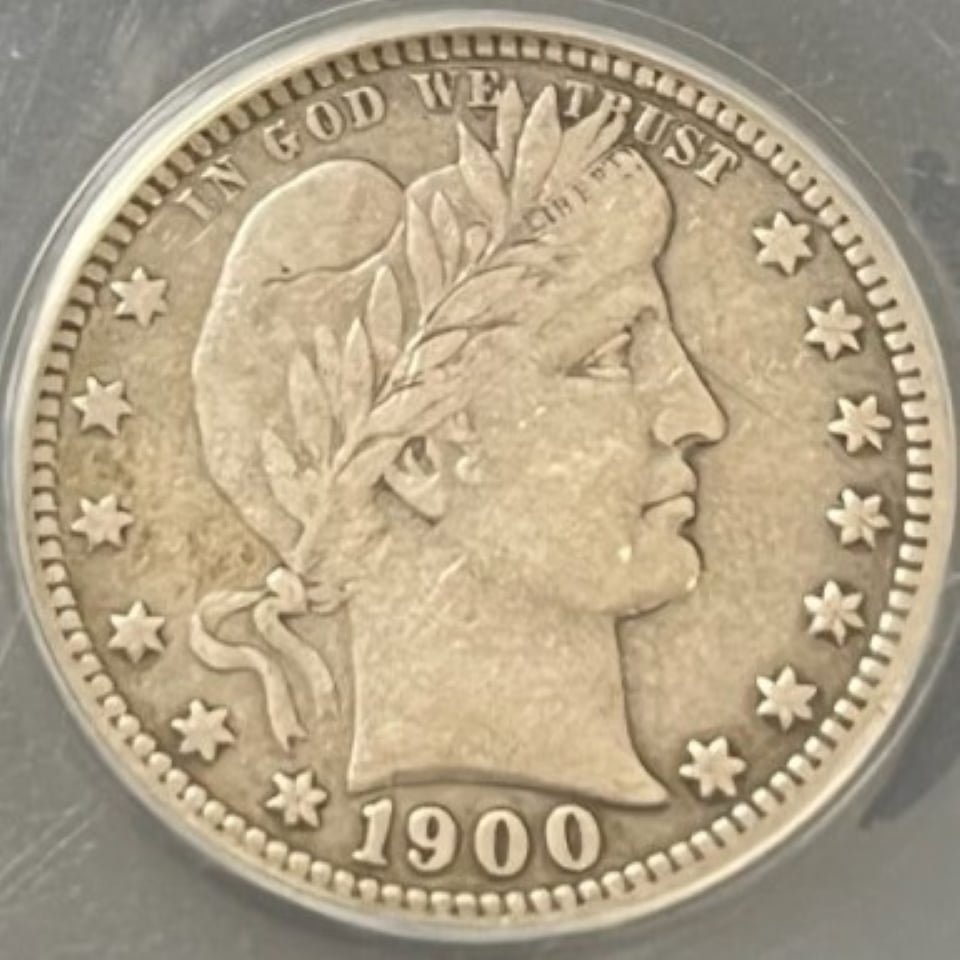
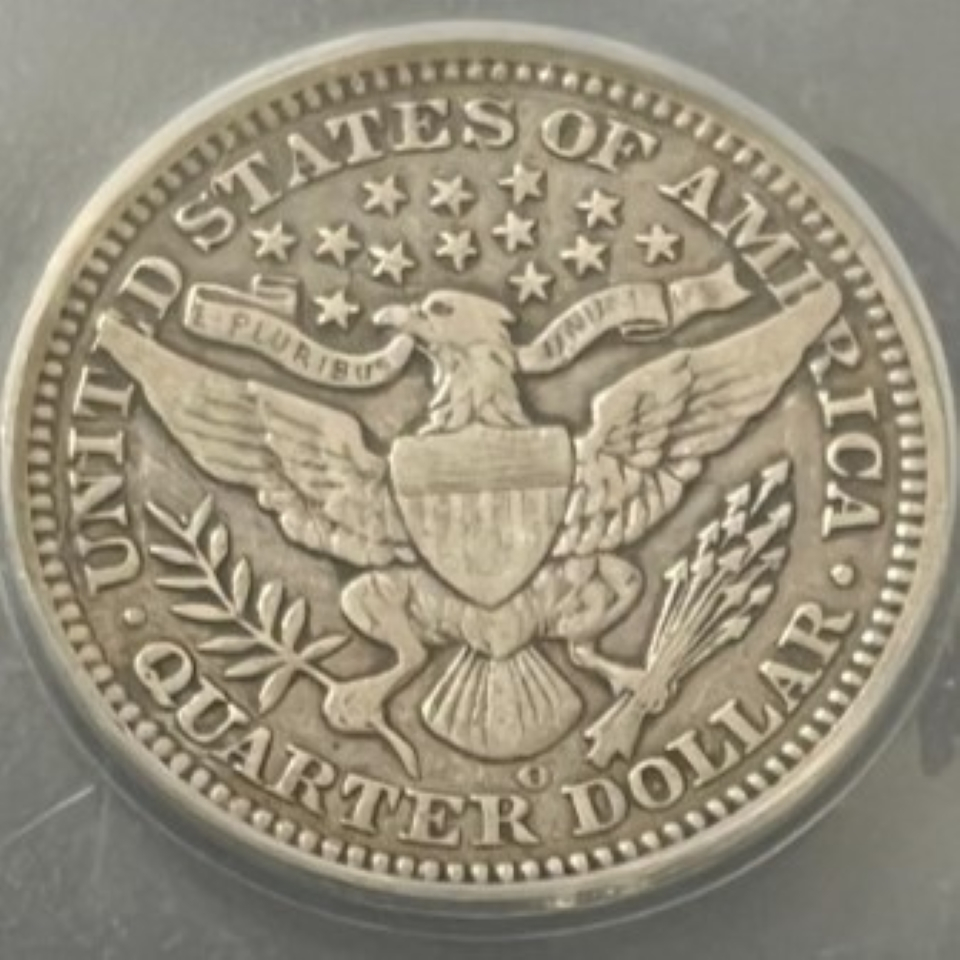
I believe it's a II/III and is a combination that I didn't have.
Yes it is,VF-20?
This one is a Type III/ III.
"This one is a Type III/ III."
JeffM what makes it a III Obv
@Redglobe - the Type III OBV still has the cartilage in the ear. The main distinguishing points are the shorter serif’s on the “T” in TRUST and the missing cross bar in the middle of the “W” from WE.
The Type III OBV was discovered about 5 years ago. There’s been no explanation found as to why such a minor change in the hub was made for the second time that year.
ANACS graded it as F-12
Thanks for the clarification. Such a minor difference was made. I was only noticing the missing cross bar in the middle of the “W” from WE.
I showed the XF45 Dollar version previously. Here is the Hawaiian half dollar version I also picked-up. Designed by Charles Barber:
Hawaiian Half Dollar NGC AU55
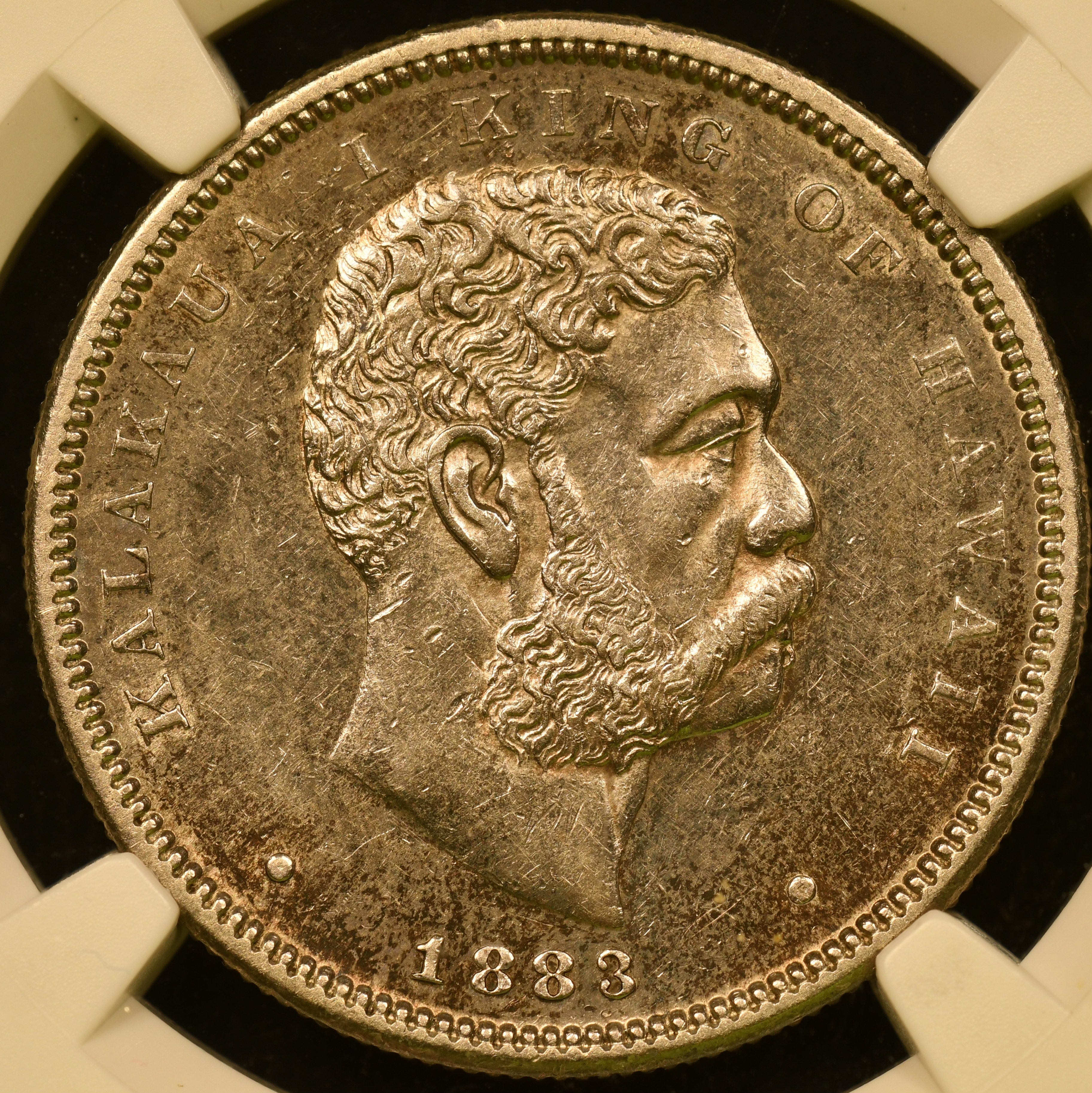
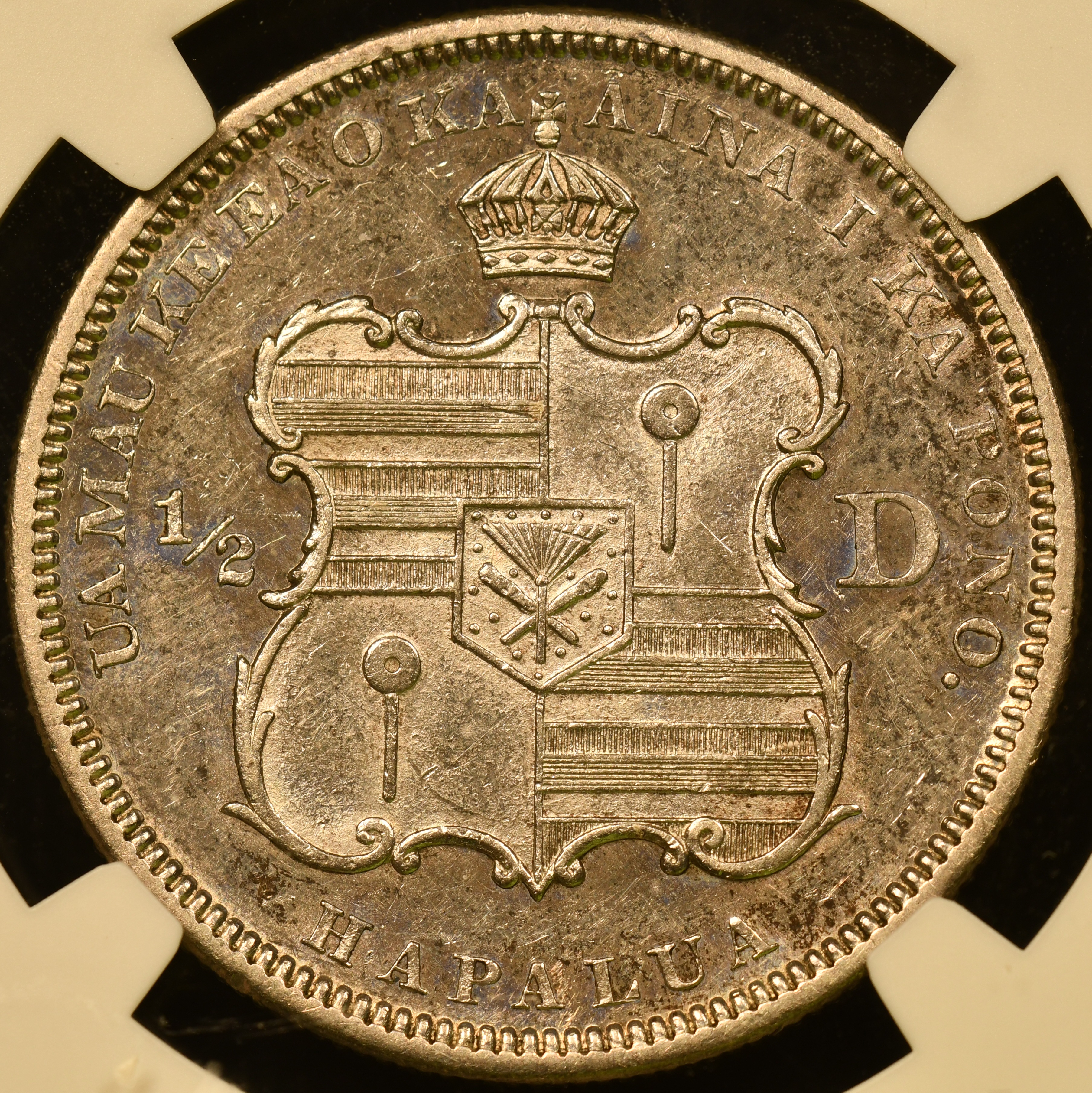
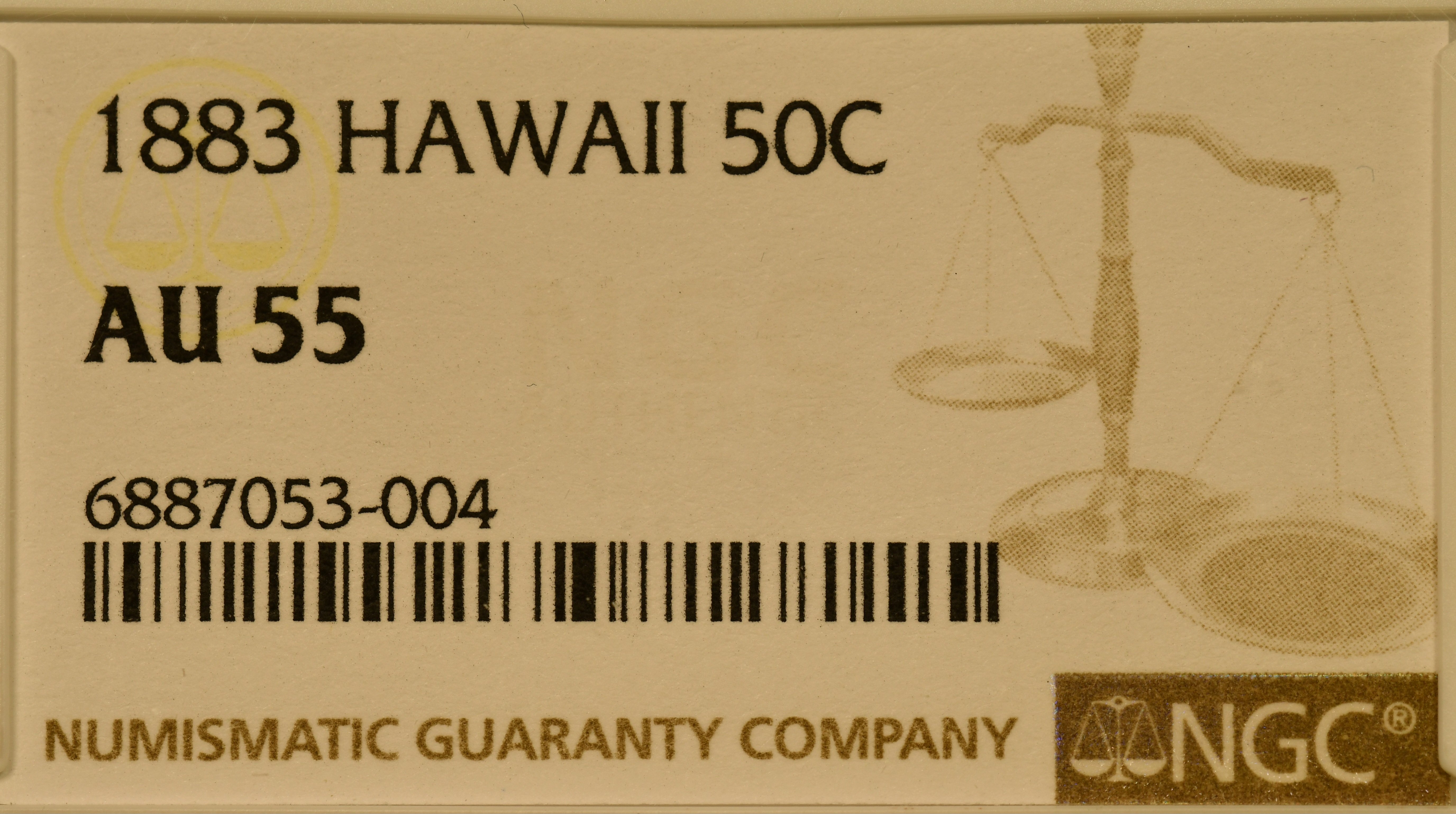
These coins went under some significant melts. The remaining populations are low.
A Barber Quartet is made up of Nickels, Dimes, Quarters, and Halves.
Just got the grade and TV back from our hosts. Nice little raw pickup from my LCS….now MS 62.
Interestingly enough my current Barber dime in my 7070 set is also a 92 O (AU 58)
Which one would you guys choose to represent the type if it were your set?
It's difficult to judge toning without having coins in hand. That said, the AU definitely is cleaner and has the better strike. If CAC doesn't say the toning of the AU is artificial, you have a good chance of getting a gold sticker.
Id go with the MS62. I love blue toning!
Thanks for the reply. Interesting that you say that…..this coin was actually part of a 45 coin submission that included 42 coins from my Dansco album. It was originally PC58 (white series holder) when I cracked it for the 7070 album.
I actually thought it would have a decent chance at a 58+. It’s hammered as you see and the skin is original. That submission actually did see 3 different coins grade 58+, but this wasn’t one of them. It was 1/2 I thought had the best shot though, although I certainly cant and won’t ever complain by the lack of a subjective plus grade.
Both of these will go to CAC soon enough along with the rest of my set that isn’t yet stickered. Although I really like them both and expect both will pass muster with JA, I’ll probably never, ever, ever let myself think a freshly graded coin has a good shot at a gold bean……a man can certainly dream though! (That I can’t help myself from doing )
)
@MEJ7070 @erwindoc @DisneyFan. If you get a gold bean on a beautiful AU58, what would that signify exactly? An undergrade?
A Barber Quartet is made up of Nickels, Dimes, Quarters, and Halves.
I think with 58s it usually means that JA thinks the coin belongs in an MS holder…….although I think there are some 58s with gold beans out there where that isn’t necessarily the case. Those coins are just absolutely top shelf 58s with off the charts eye appeal and the gold beans recognize them as such.
I’ve seen this debated often over the years….thats my 2c take on it anyway.
BTW, BIG morning for me in the Barber collecting universe.
Woke up this AM and did my usual checking through various dealer websites while sipping coffee……about jumped out of my chair to see @Desert Moon with 2 VF Barber quarter absolute beasts on his site. A PC/CAC 1897s VF 35 and a 1909 o PC/CAC VF 20!!!!
Id been checking often since reading @sedulous OKC show report which included his rave reviews of desert moons BQ offerings and mentioning that he had some real toughies….but since they hadn’t popped up yet on his site I’d assumed they’d been sold.
I am super thrilled at the opportunity to add these to my collection. Only hard part will be which one to choose to include in my 7070 set. Maybe I’ll let them take turns haha.
Don’t want to prematurely jump the gun on posting dealer pics………..but both appear to have the quality I dream about with these dates. Especially a decade ago during the 4-5 years I was scouring the earth putting my Everyman BQ set together.
Amazing start to the day!! Thanks to DM for the coins and to Tim for the tip!
@MEJ7070 Yeah, from what I saw, you won't go wrong with any of those coins. You will be happy once you see them in hand. - T
A Barber Quartet is made up of Nickels, Dimes, Quarters, and Halves.
Here is a 1900-O Barber Quarter in PCGS XF45 from JRM Tampa. It is a Type I Obverse and Type II Reverse. I have XF40's but now happy for a 45.
1900-O Barber Quarter PCGS XF45 Ty I/II
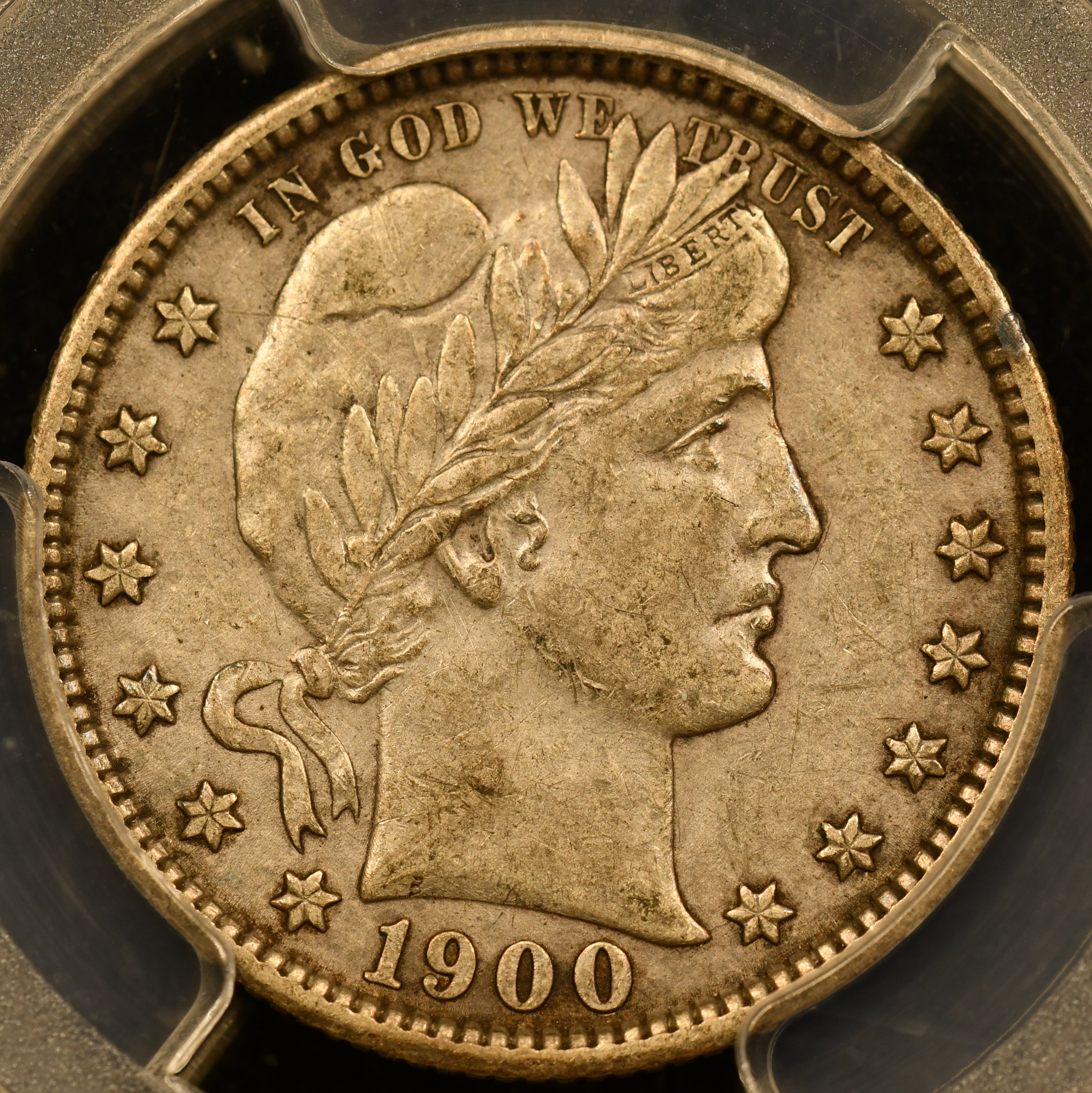
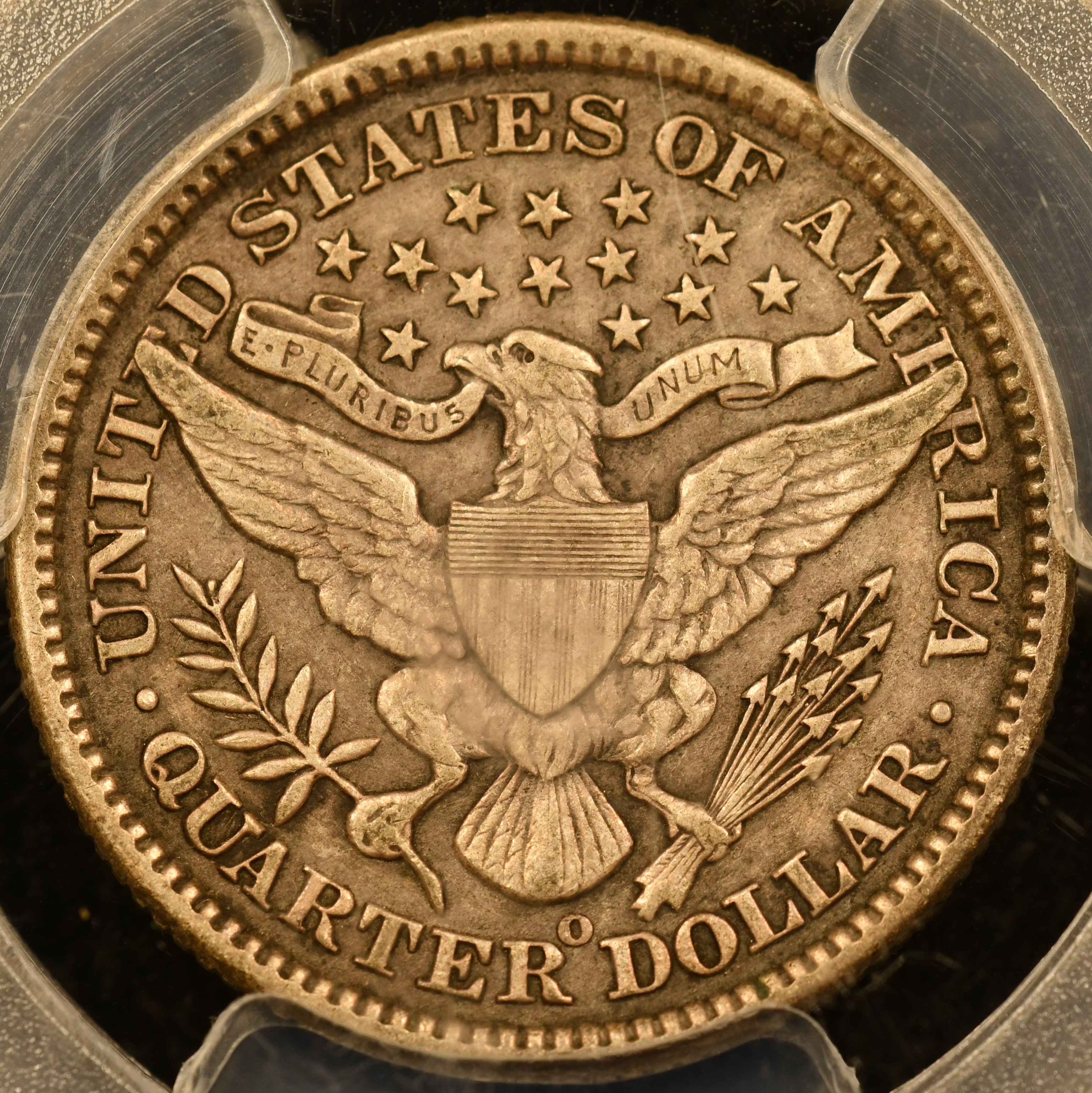
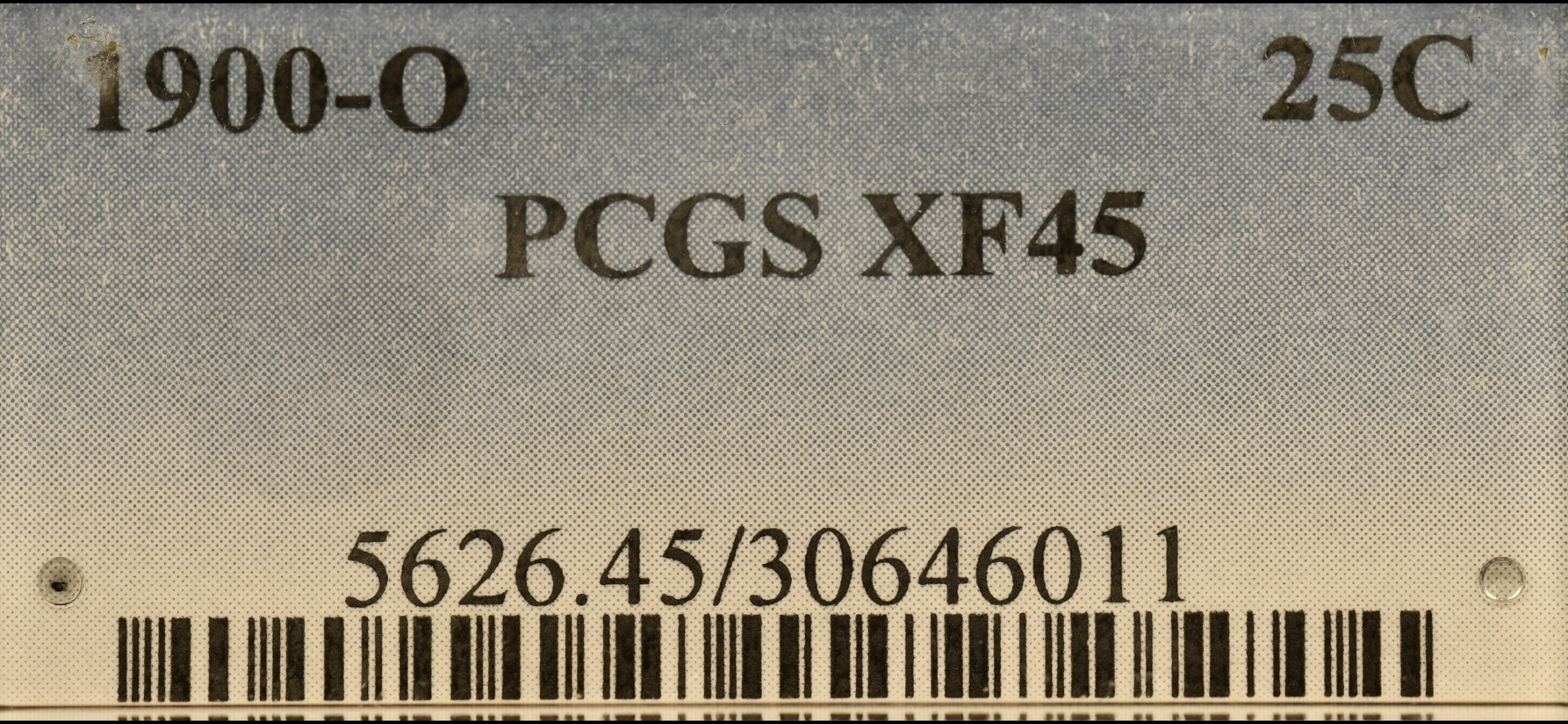
A Barber Quartet is made up of Nickels, Dimes, Quarters, and Halves.
@MEJ7070
Glad you are now clued in. Al from DesertMoon has great coins.
A Barber Quartet is made up of Nickels, Dimes, Quarters, and Halves.
I would keep both. 😎 one set an everyman.
A Barber Quartet is made up of Nickels, Dimes, Quarters, and Halves.
Here is a newp dabbling into an area I have never previously been involved with. This is from my LCS
1910 Liberty Nickel PCGS Proof 65 Cameo
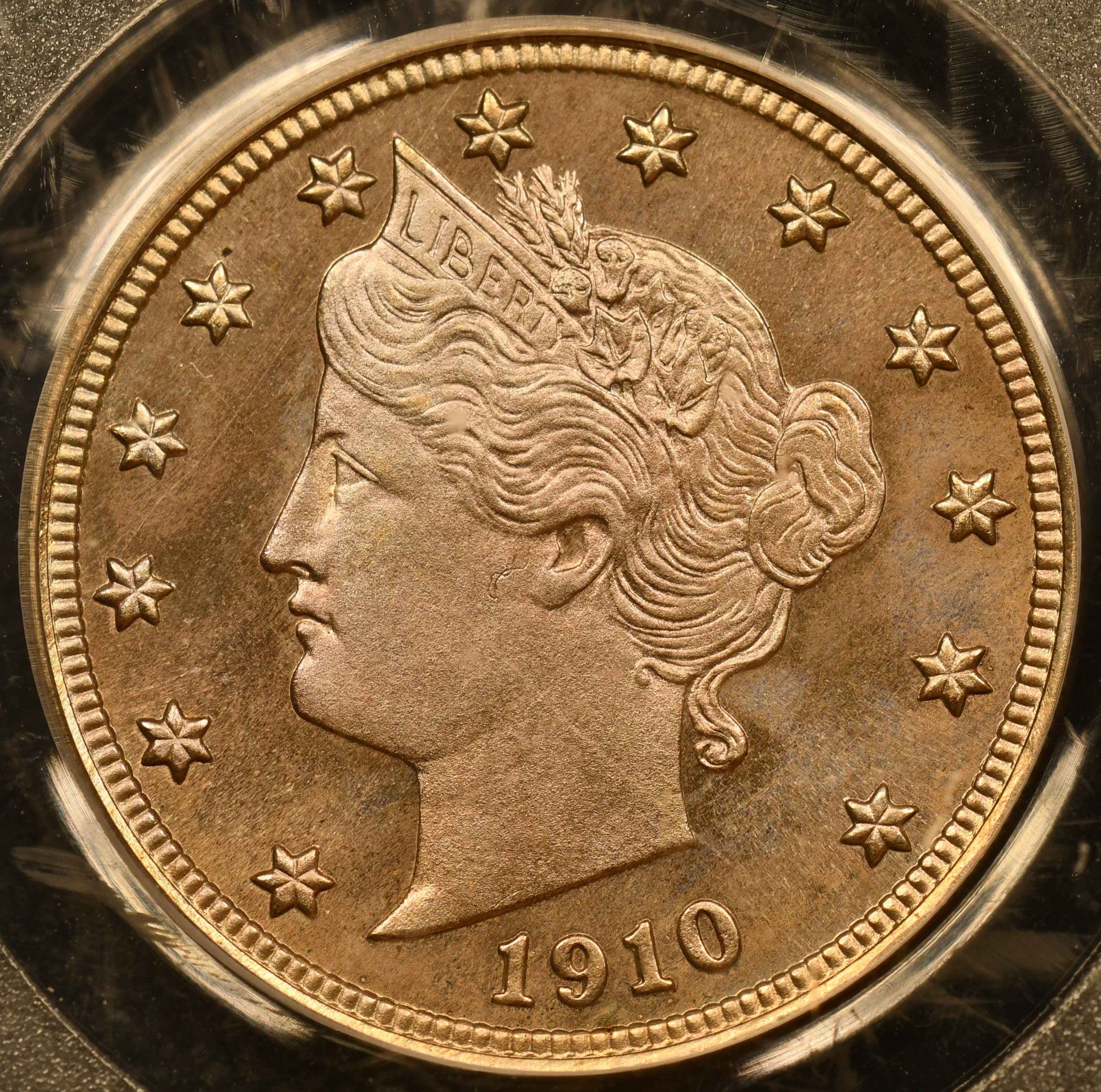
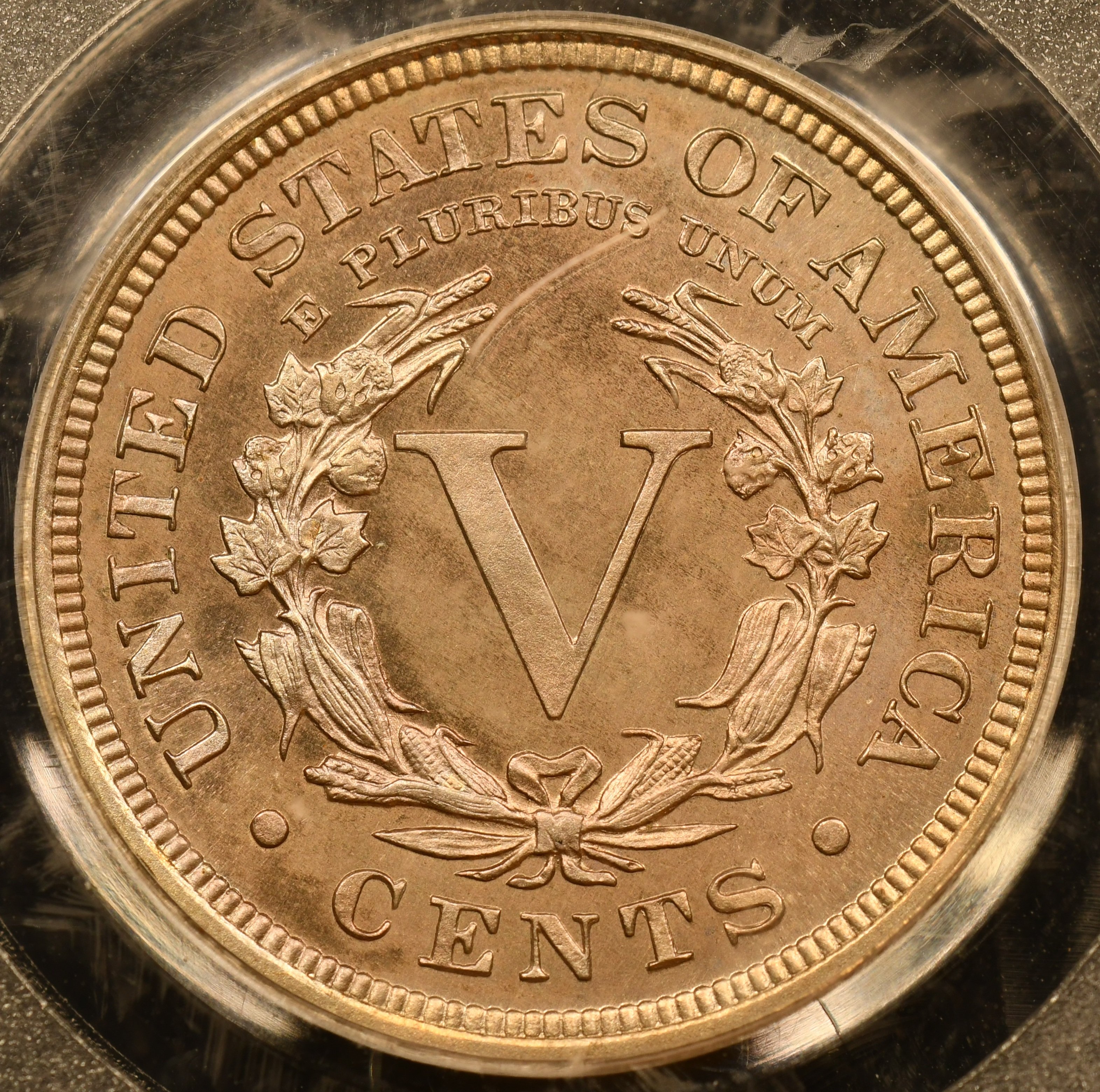
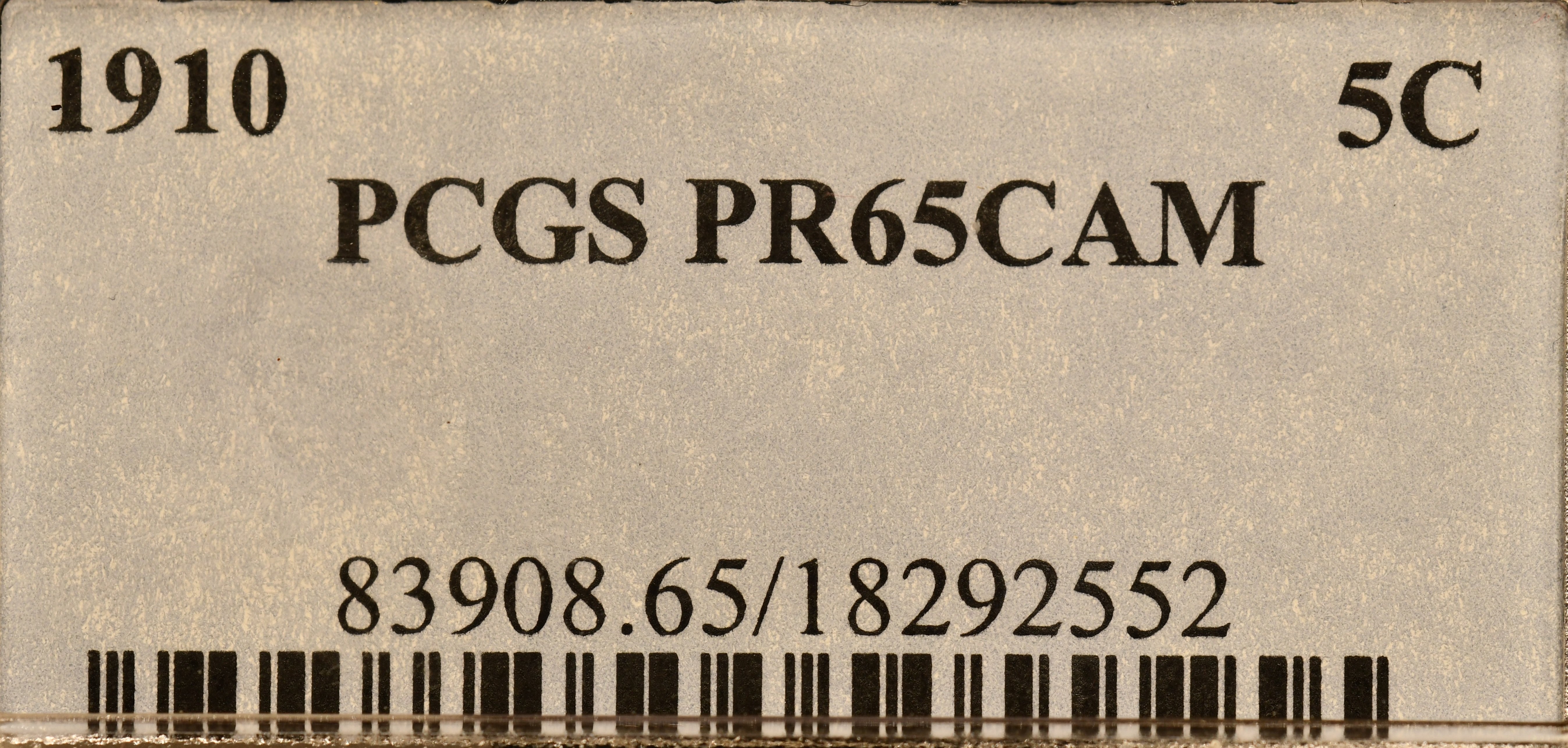
A Barber Quartet is made up of Nickels, Dimes, Quarters, and Halves.
How many of you are riding the wave of higher silver prices? Or have you already sold your silver? Are Barber slicks an integral part of your stash?
A Barber Quartet is made up of Nickels, Dimes, Quarters, and Halves.
I haven't sold any silver in the last few months. The only barber slick I have is a G4 1901S so I'll probably hold on to it.
I would too!
A Barber Quartet is made up of Nickels, Dimes, Quarters, and Halves.
I primarily hoard the low grade dimes and halves, and quarters to a lesser degree. I have a local dealer who sells a lot of junk 90%, and I always dig through his bin and pull out the Barbers, as long as they aren’t complete slicks. Can’t pass up the old warhorses!
Dave
Posted about ordering these in this thread and this pic yesterday in the new purchases thread. Just making sure there’s a pic here where these belong! I join others in highly recommending Al at Desert Moon.
I have been slowly upgrading my album set into a slabbed set. I am now at 94% complete. I have one typical hole to fill, 1901S, but 3 other puzzlers(1892P, 1900P, and 1915D). Ill need to get straight graded coins in the place of some of the details coins, but not a huge hurry! I have kept the lower end portion of the album set. Looks kinda sad mostly empty. If anyone has some VG quarters that they want to sell, just reach out!
Enjoy looking at my circulated quarter set linked below.
https://ngccoin.com/registry/competitive-sets/426995/
I looked over your set. You’ve come a long way. Well done!
It’s interesting you don’t have an 1892-P (yet). That one is tougher than one might expect, especially for a 1st year issue. It took me quite a while to locate a nice original PCGS VF example for my VF set. Lots of lower grade, and MS examples. VFs, not some much.
Keep at it!!!
Dave
I had one in AU58 that looked too nice compared to the rest of the set and I sold it when it graded. I may have to make my own again if I can find one that is problem free!
It took me awhile just like Dave. I came across mine via Ebay from Sahara Coins in August 2016. They are definitely tough to find in more worn grades and easier in AU to Unc.
1892-P Barber Quarter PCGS VF30 Type II Reverse
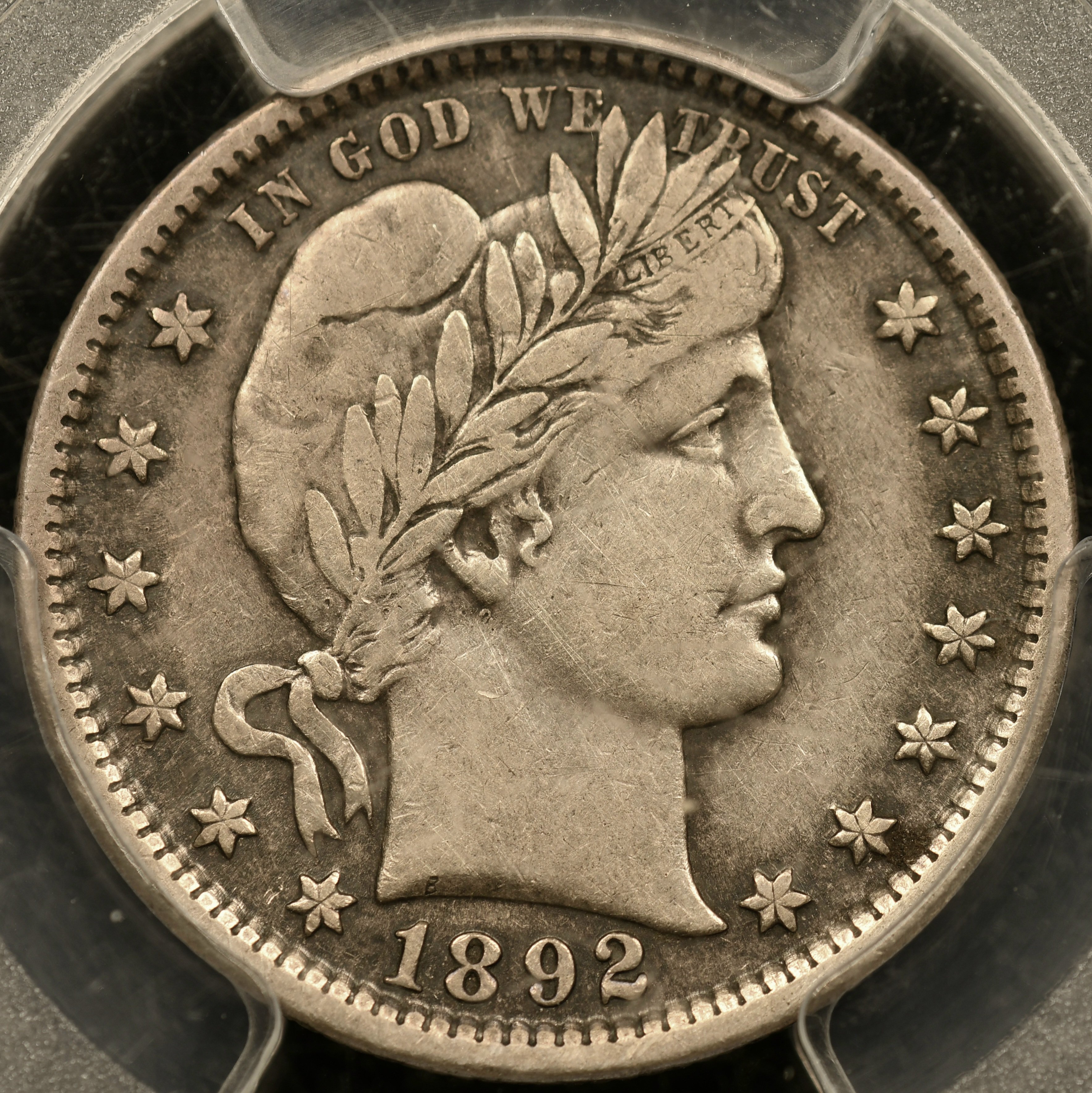
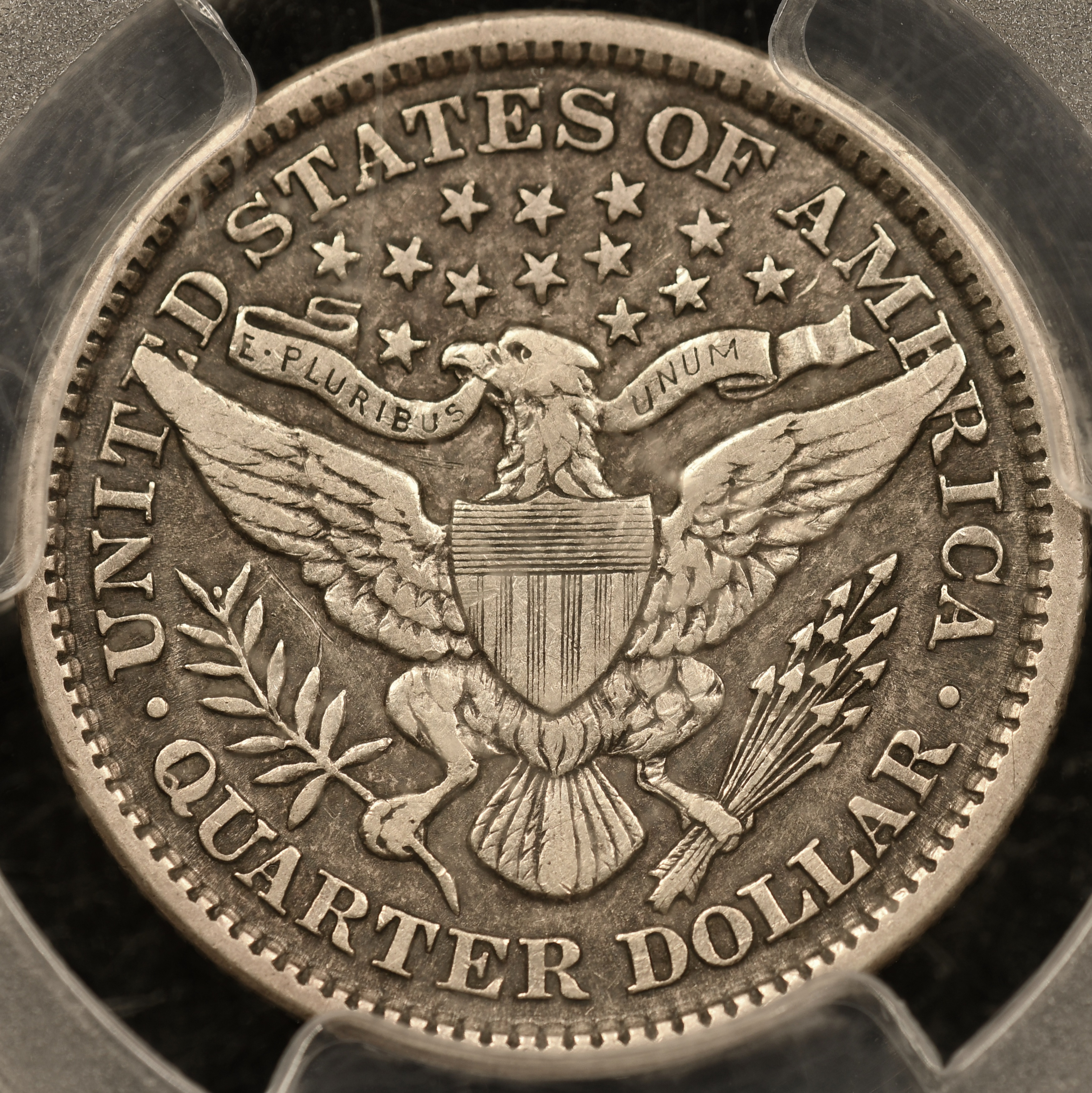
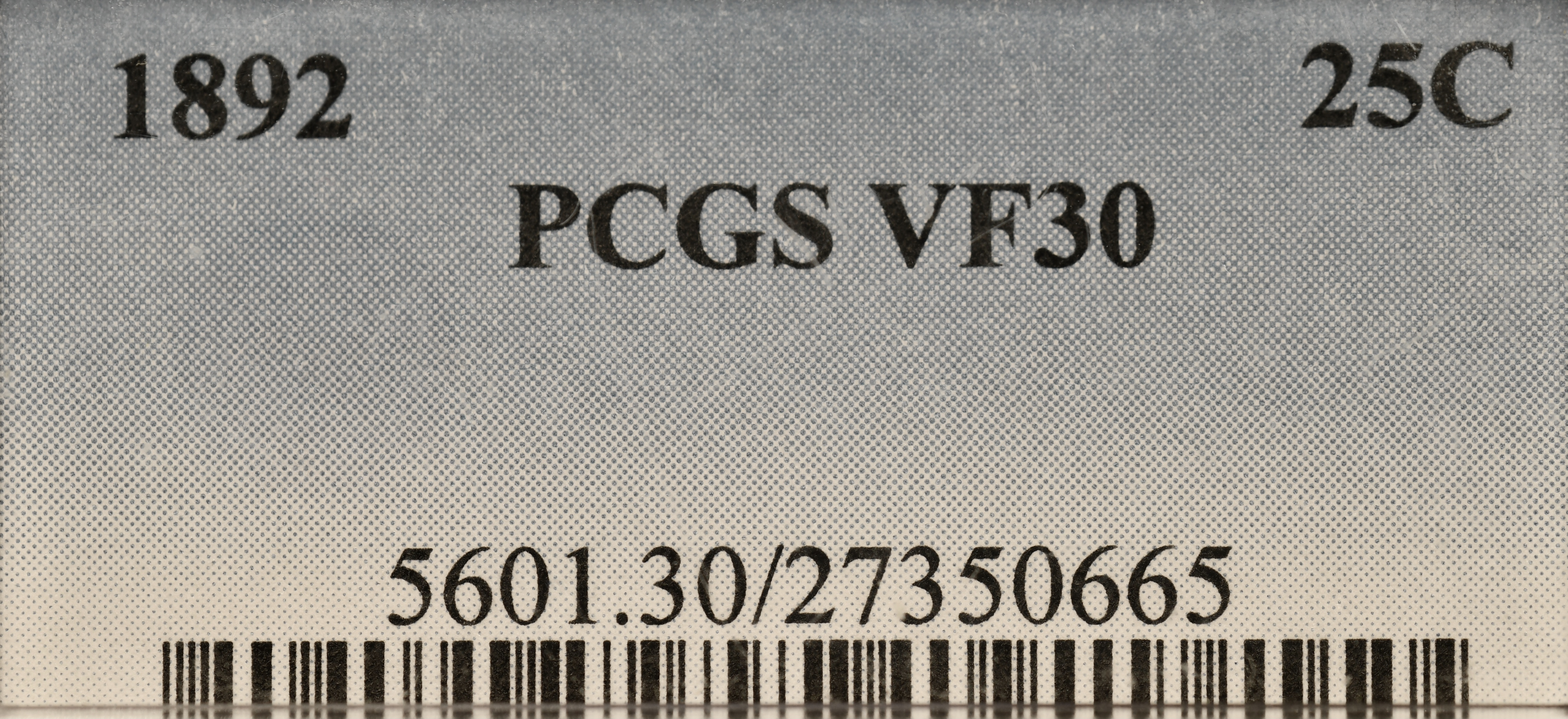
You know if you have a Type I or Type II Reverse by looking at the first, left-most, star in the field above the eagle. Type I, the top of the star points left. Type II, the top of the star points right. It is much easier to determine the Type that way than looking at the wing extension over the lettering.
A Barber Quartet is made up of Nickels, Dimes, Quarters, and Halves.
I saw these in hand at OKC ANA, beautiful specimens for sure. - Tim
A Barber Quartet is made up of Nickels, Dimes, Quarters, and Halves.
Really happy to have this one on its way into my type set. PCGS VF 20 (CAC). You guys can recognize the dealer from the pics I’ll bet.
Will be an “upgrade” from this PC40, which I really like…..
……just couldn’t pass up the chance to add an 04s with this much going for it.
I just had this BQ delivered. This is a very scarce Type I Obv and Type III Reverse 1900-S Barber Quarter.
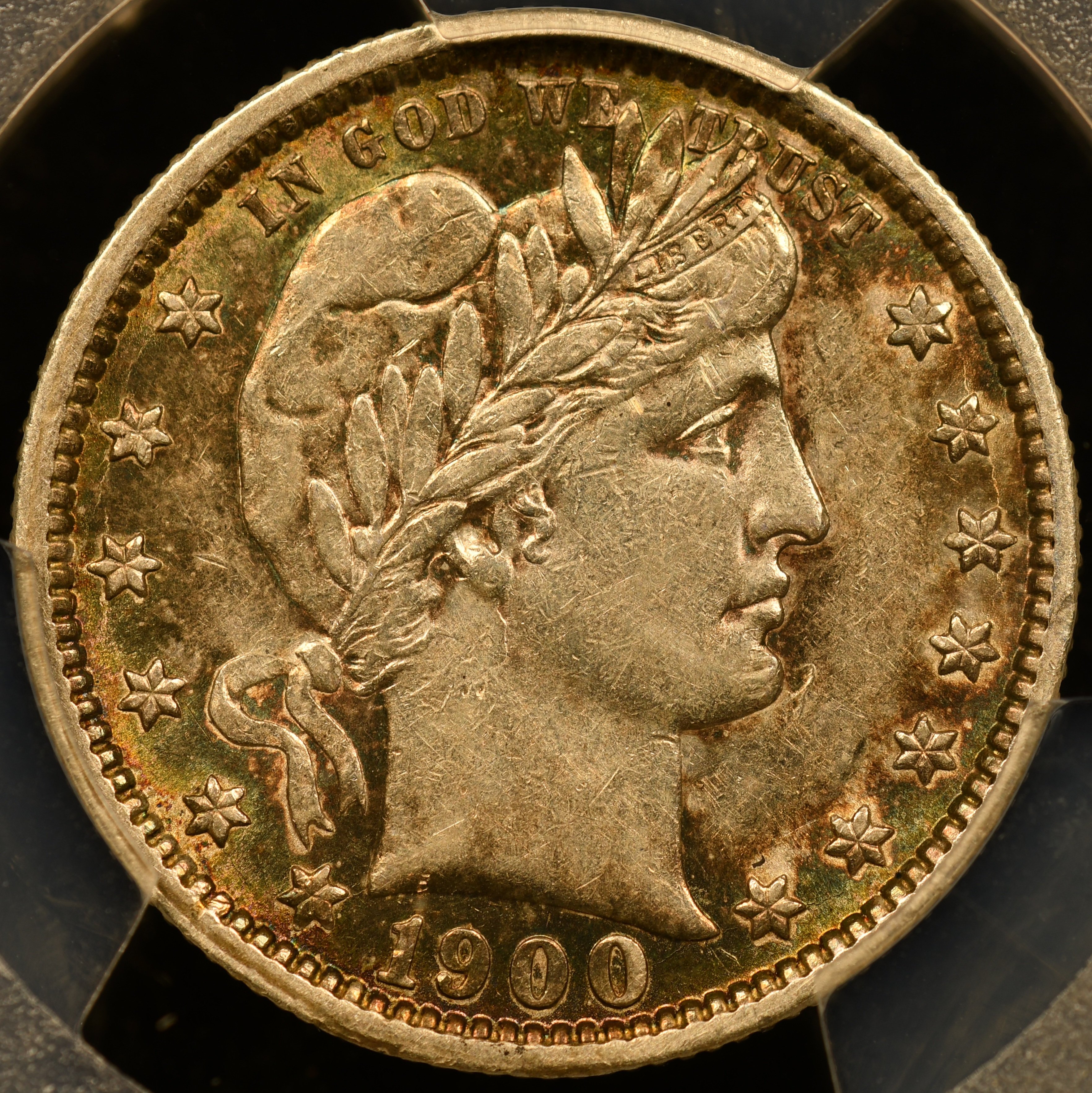
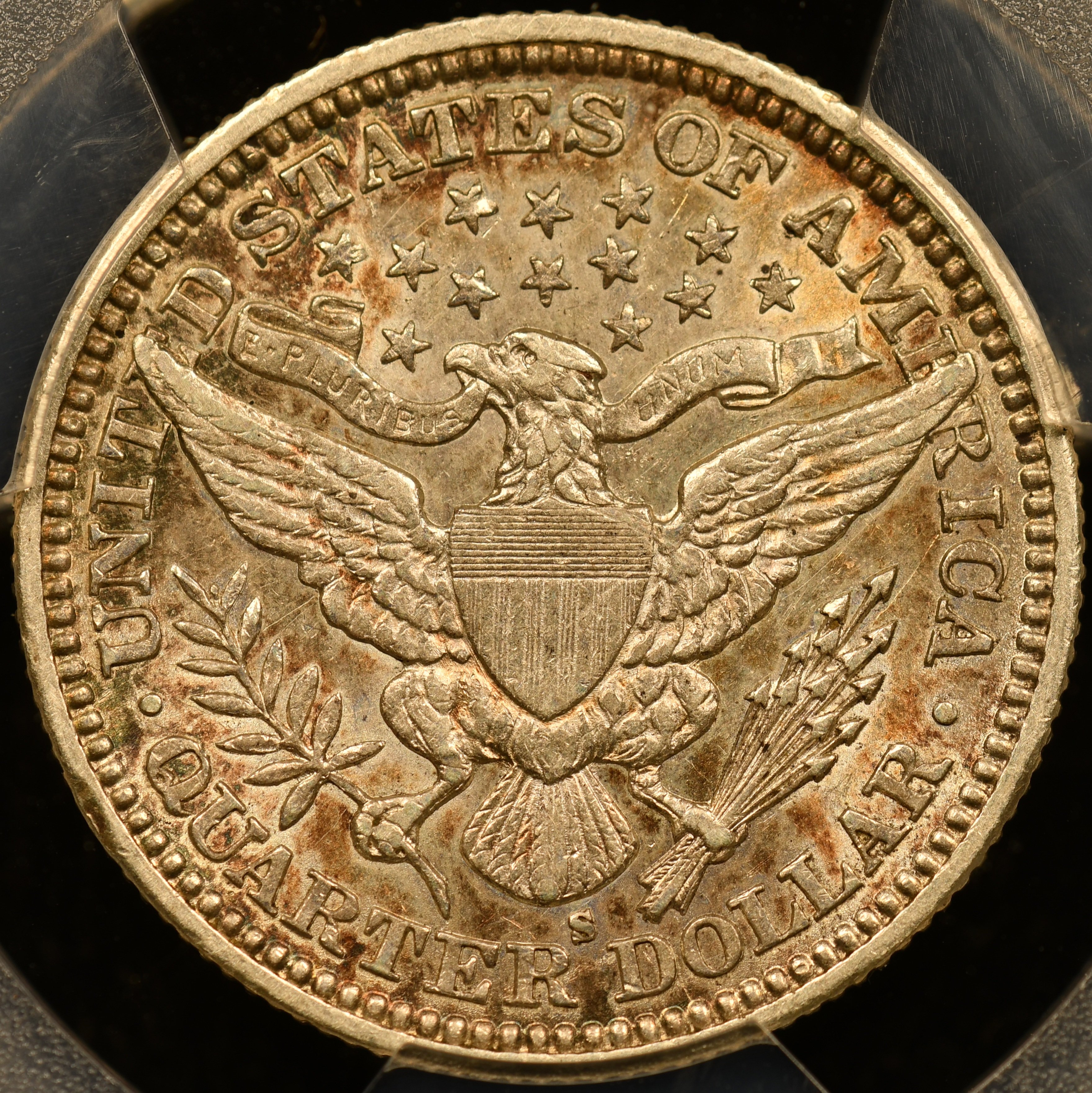
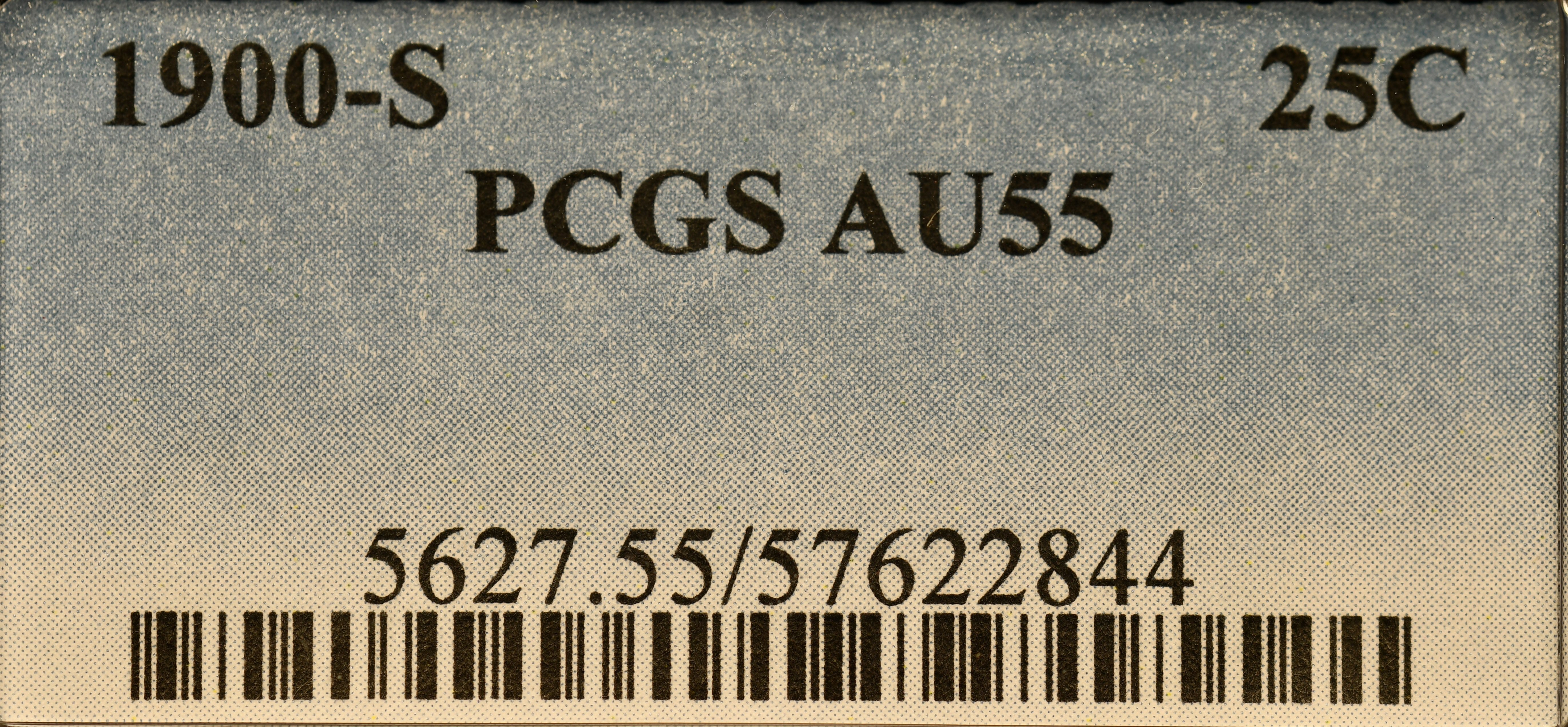
1900-S Barber Quarter PCGS AU55 Type I / III Variation
A Barber Quartet is made up of Nickels, Dimes, Quarters, and Halves.
@MEJ7070 I love that '04-S for that grade. A very nice DKRC pick-up!
A Barber Quartet is made up of Nickels, Dimes, Quarters, and Halves.
For my recently arrived pick-up, this is a long sought-after 1906-O Barber Quarter in VF30 PCGS. Thank you Liz Coggan! I have searched for many years to get a VF30 1906-O BQ:
1906-O Barber Quarter PCGS VF30
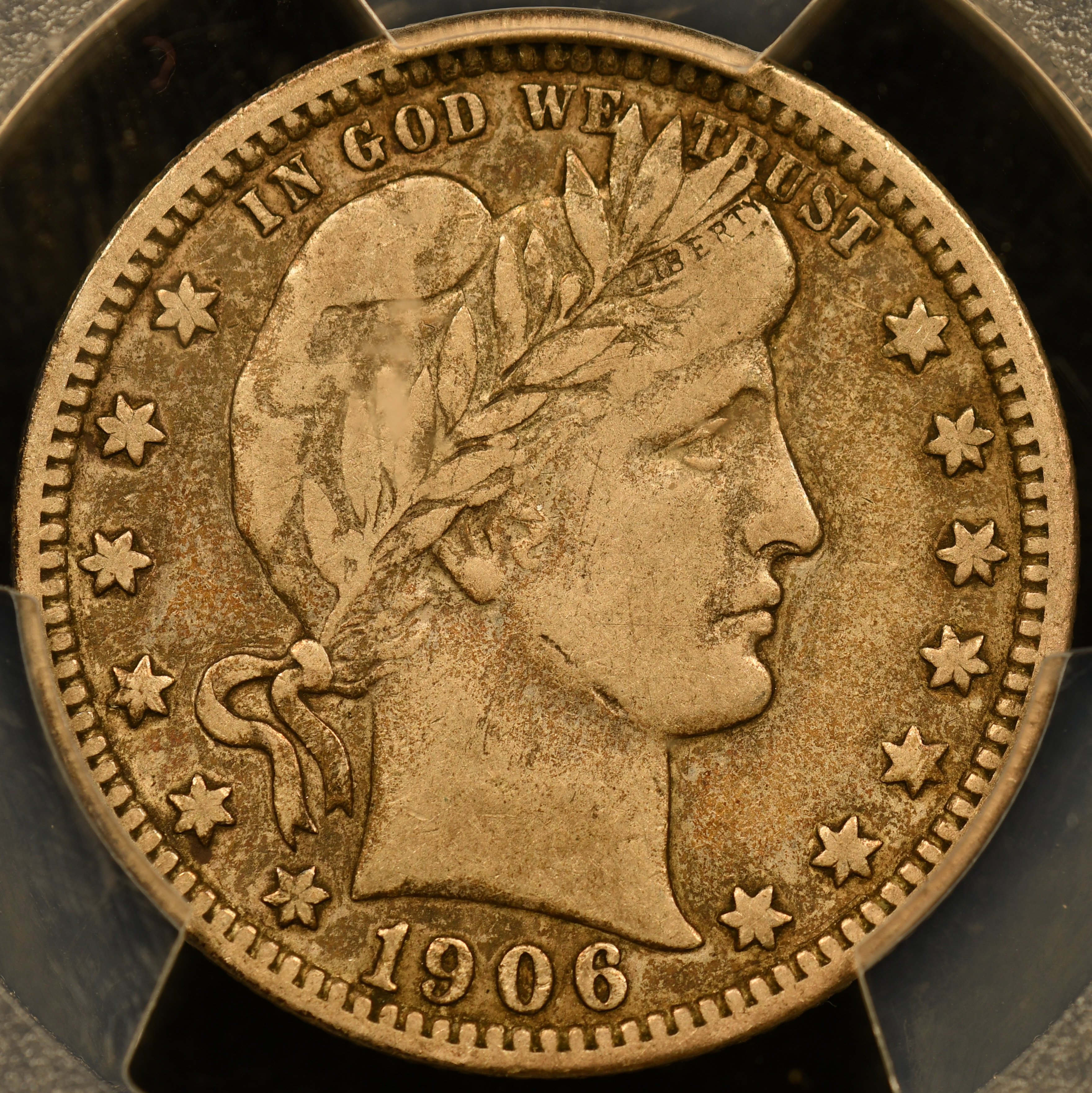
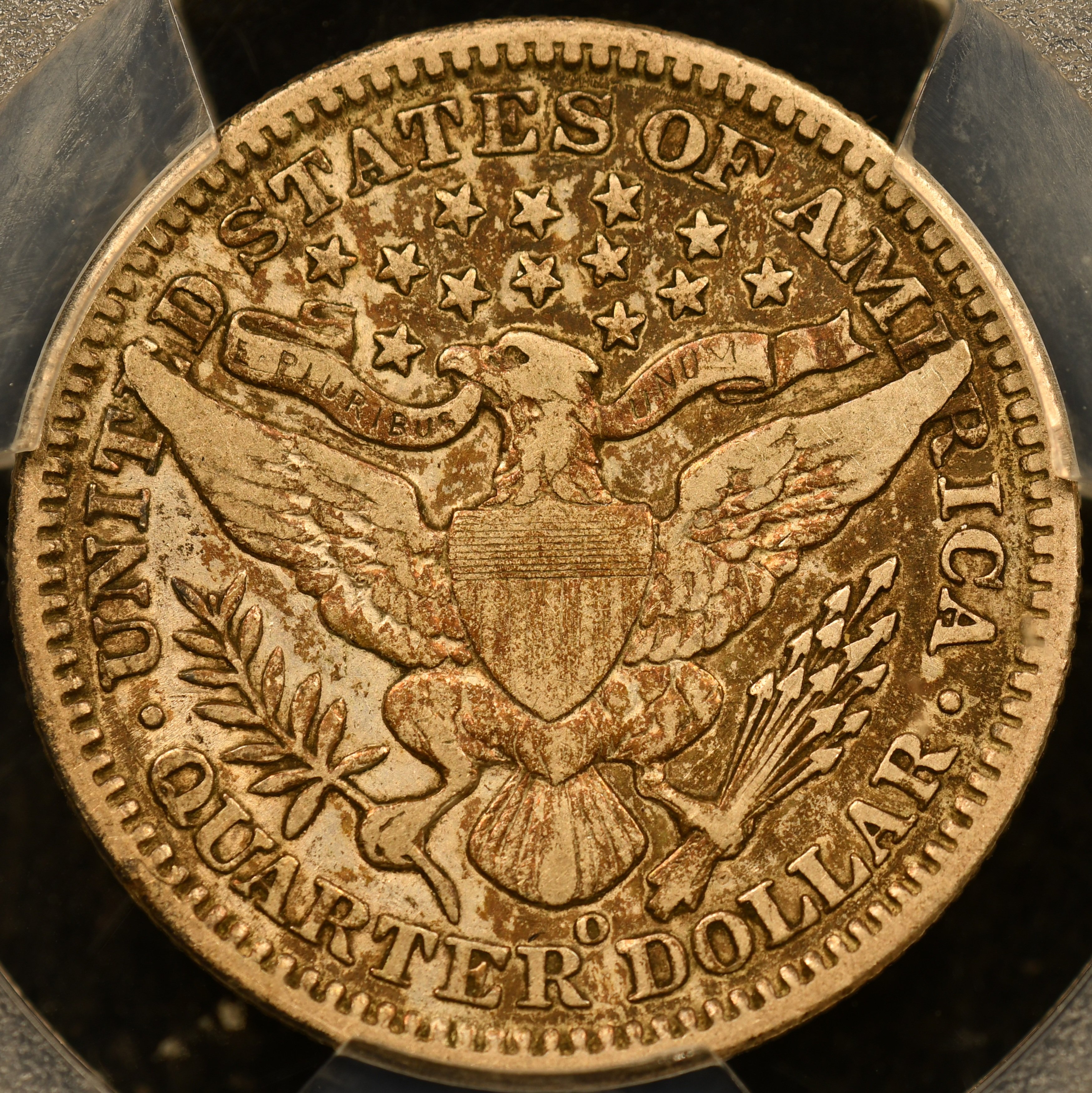
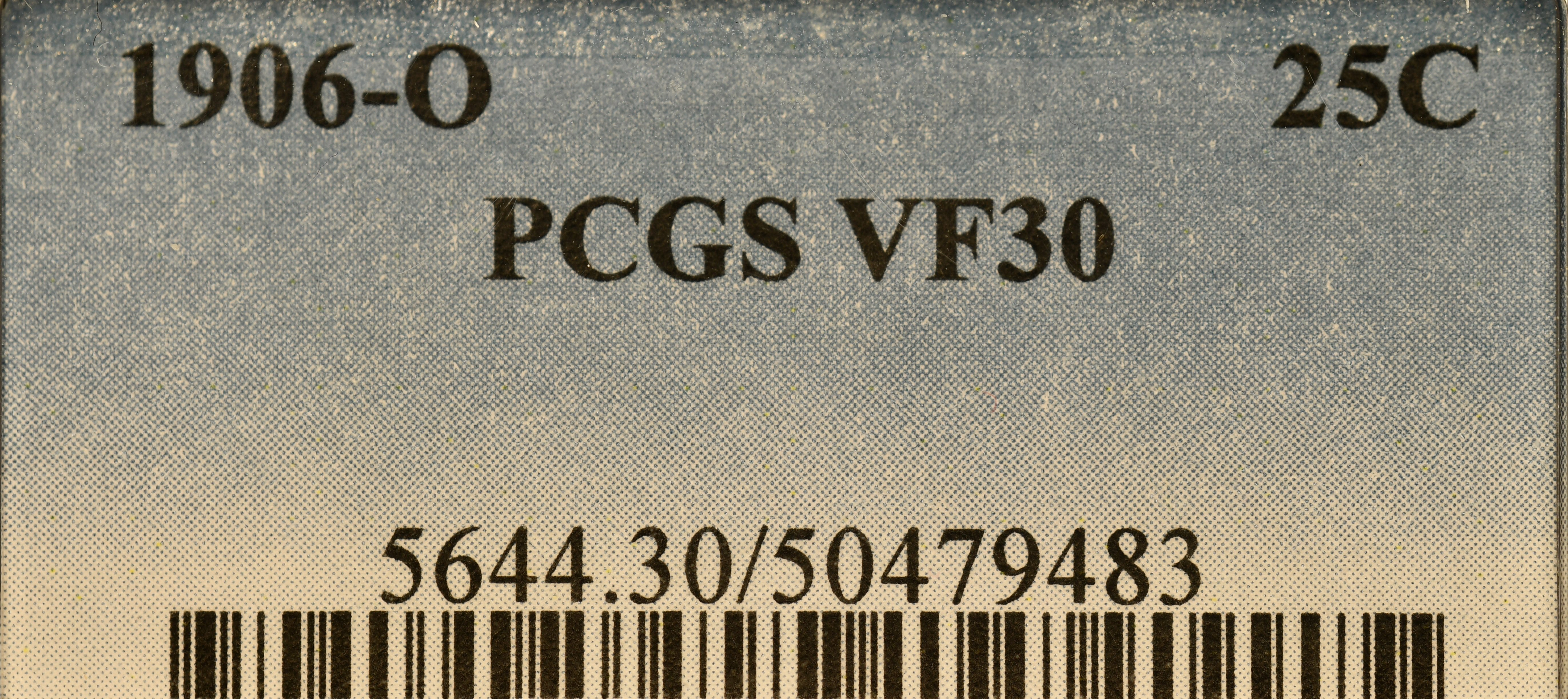
A Barber Quartet is made up of Nickels, Dimes, Quarters, and Halves.
Congrats @sedulous
Nice find. Love me some original skinned mid grade 06 Os